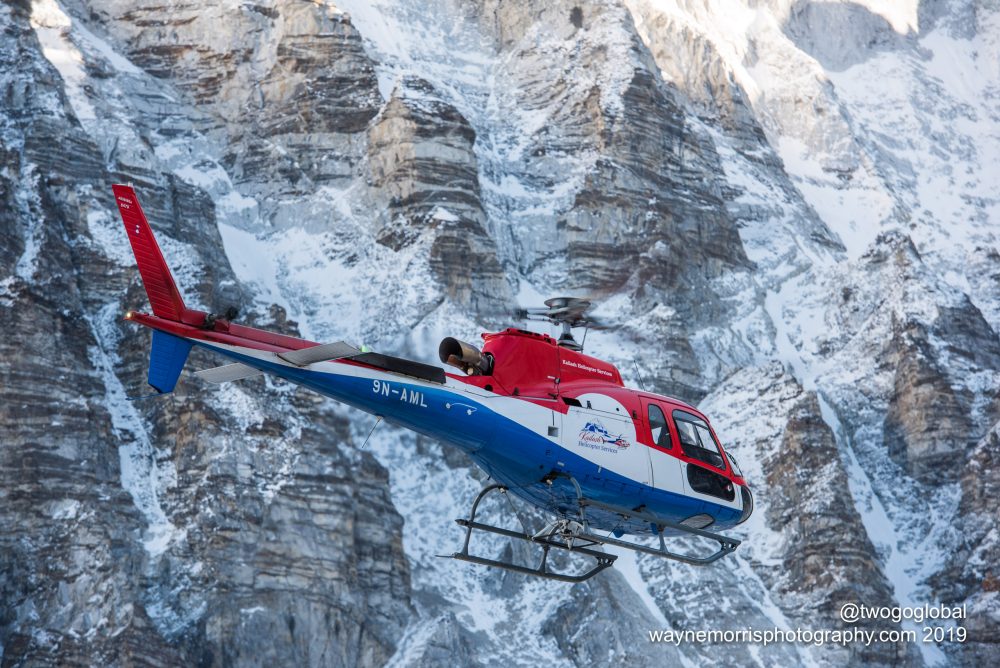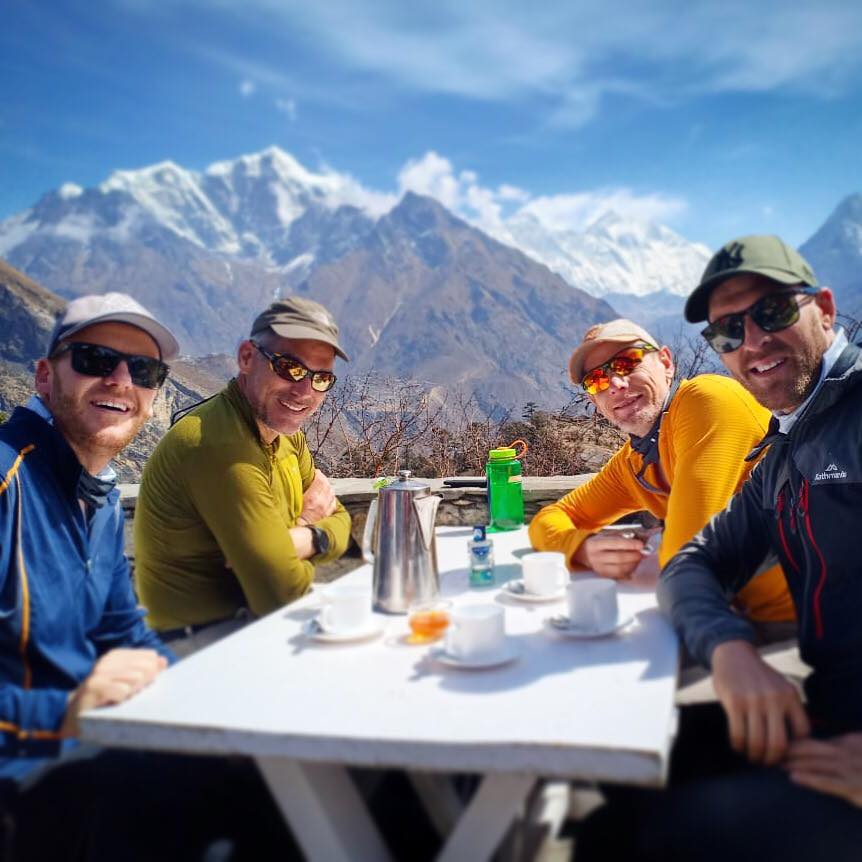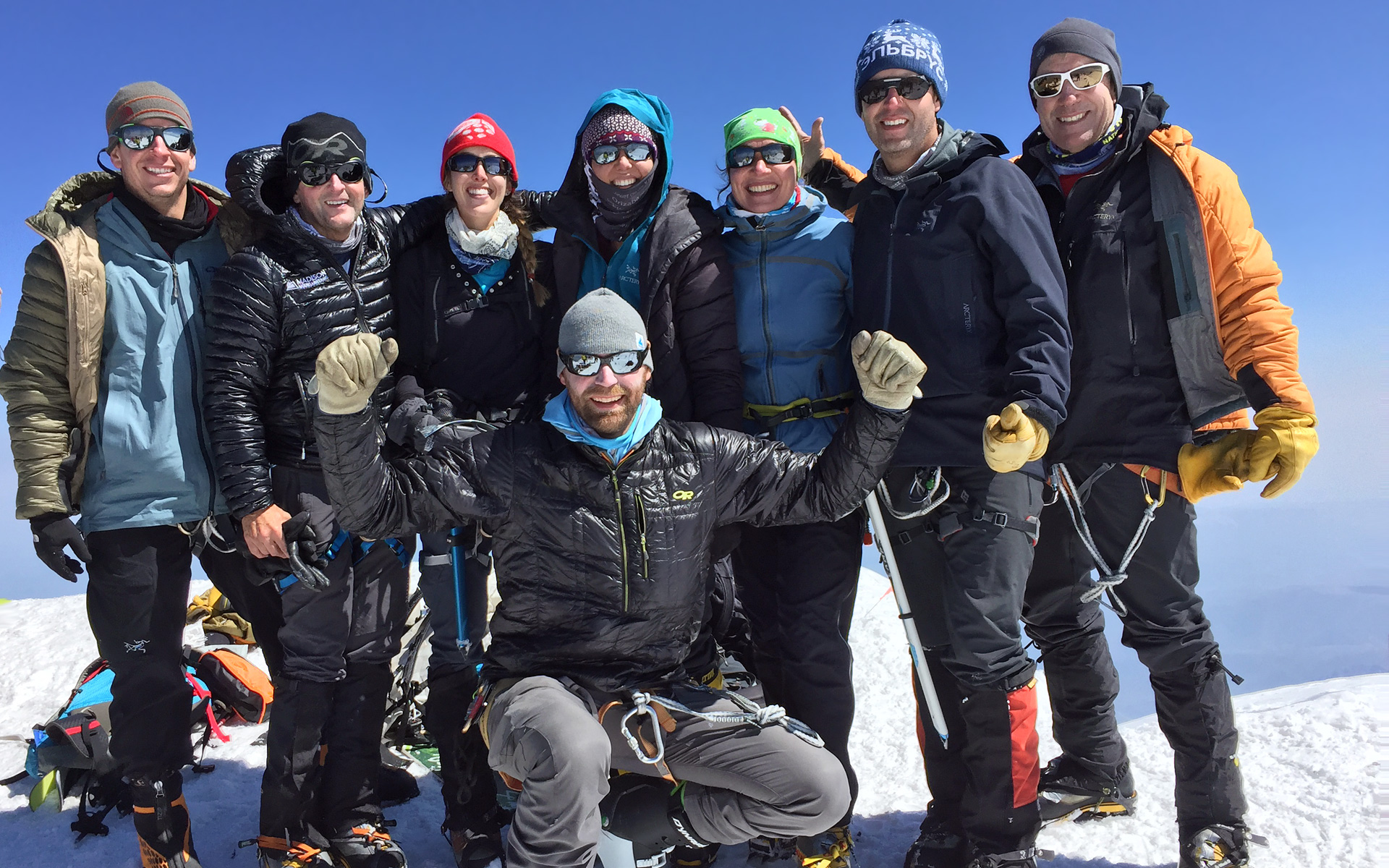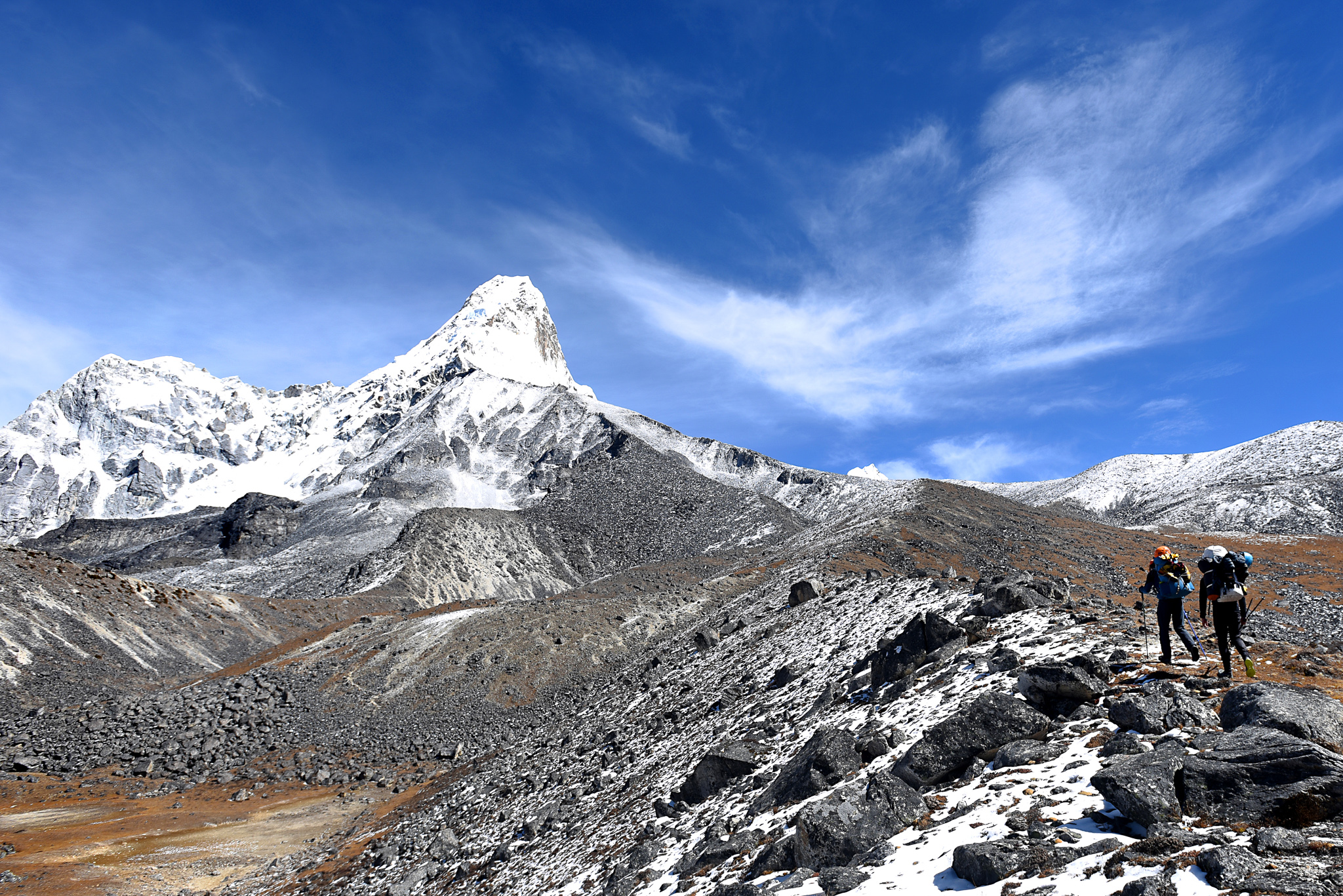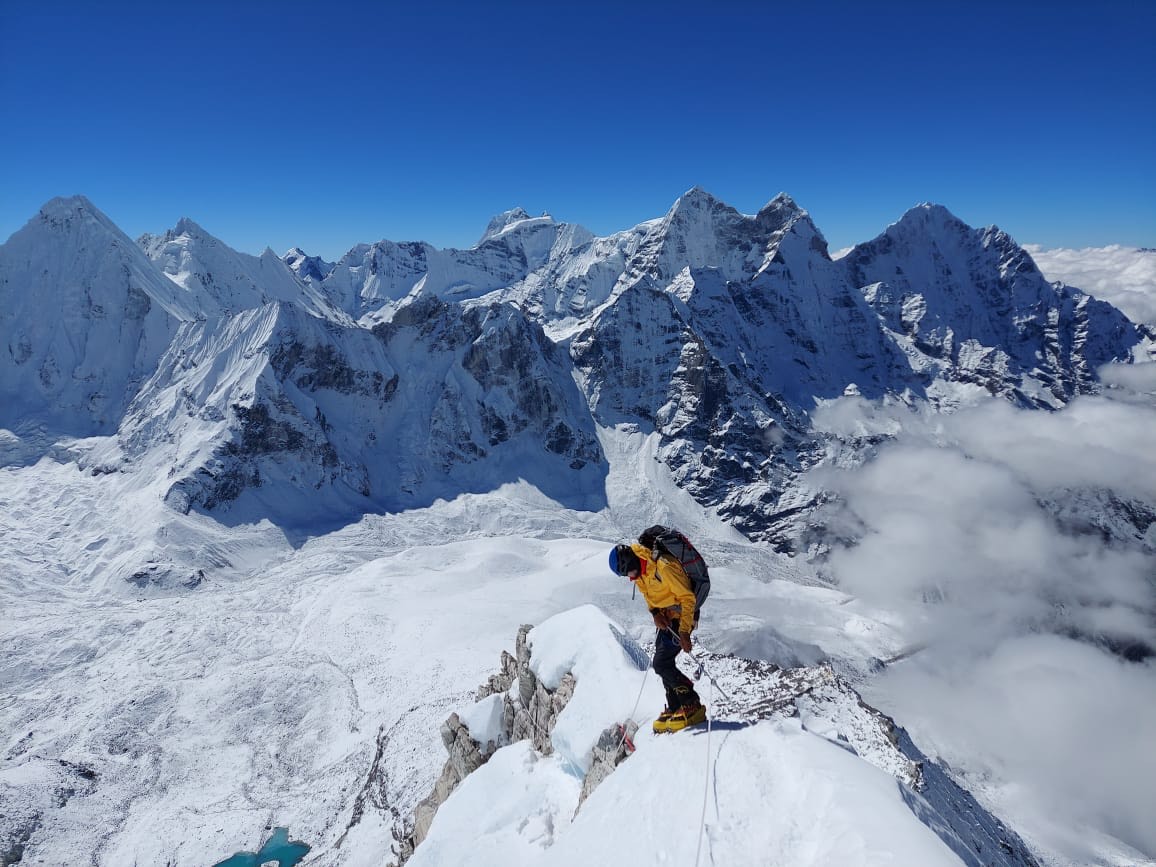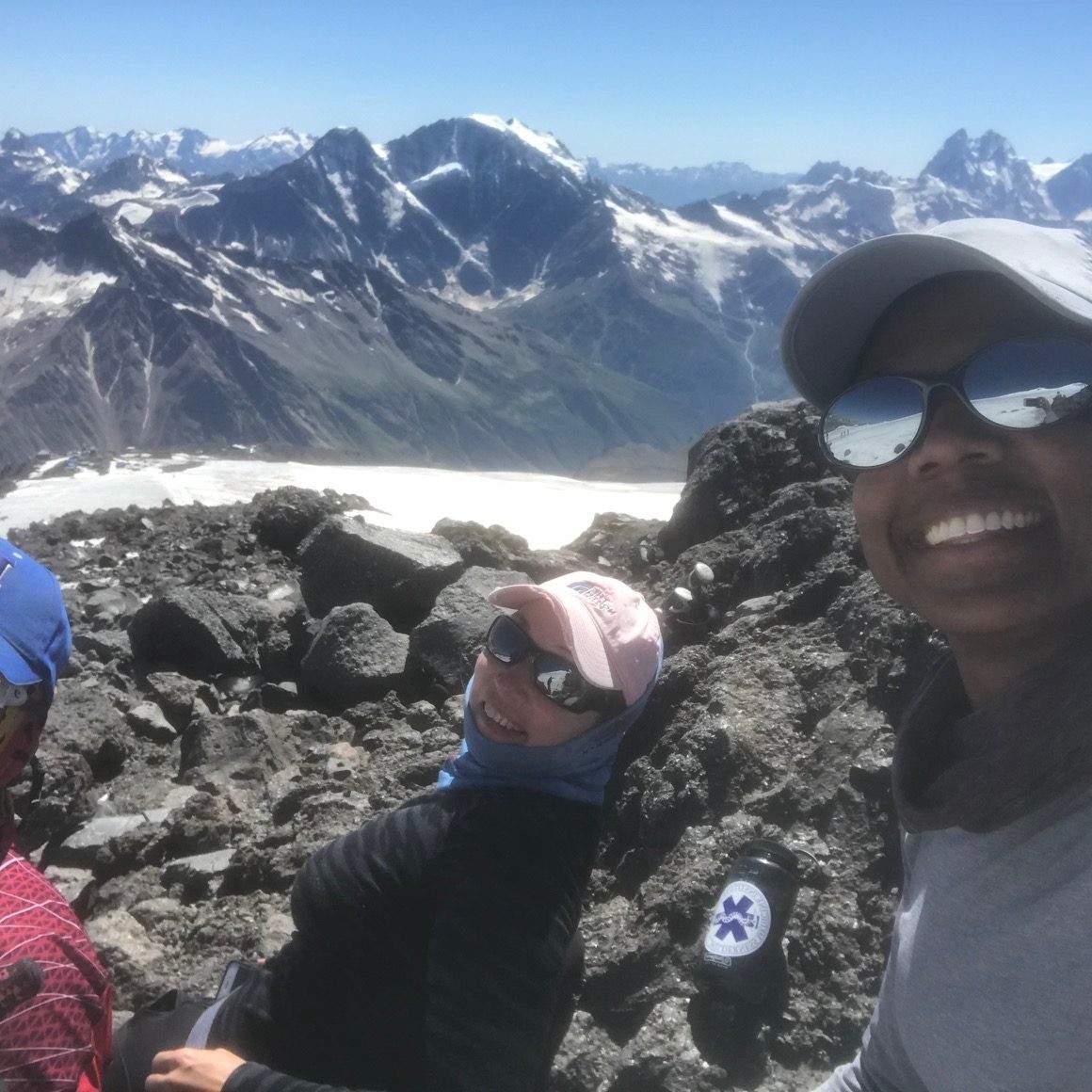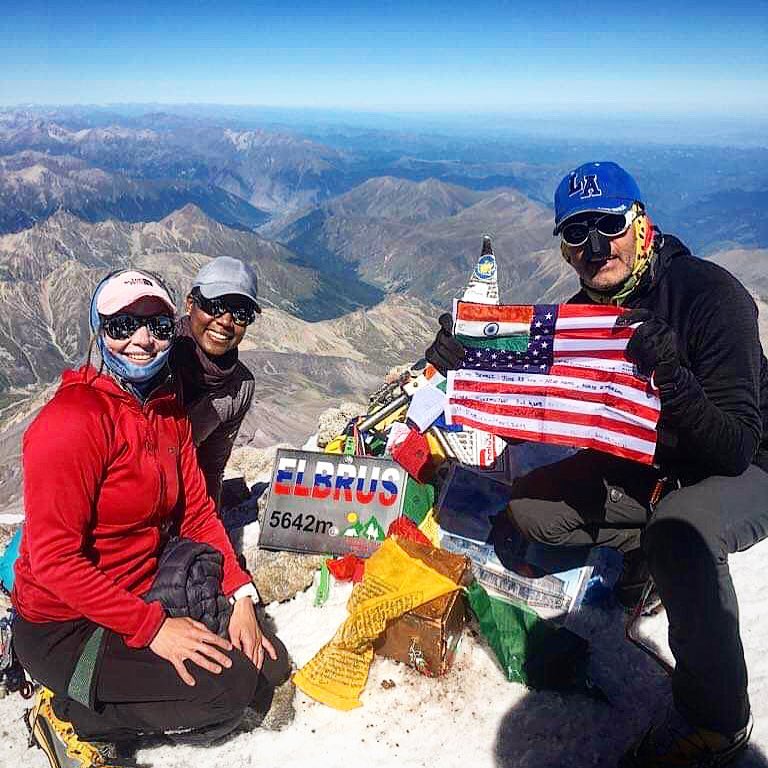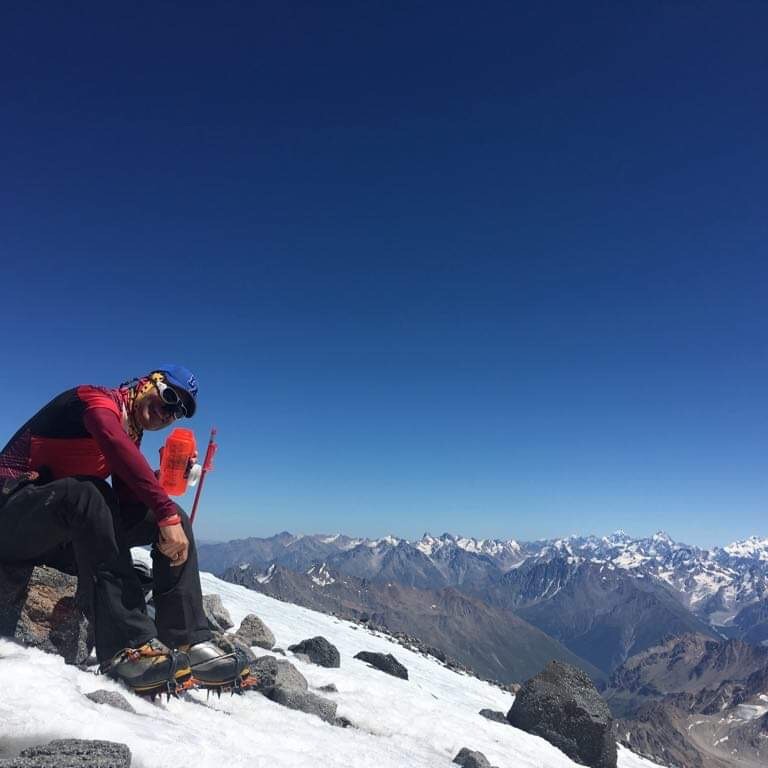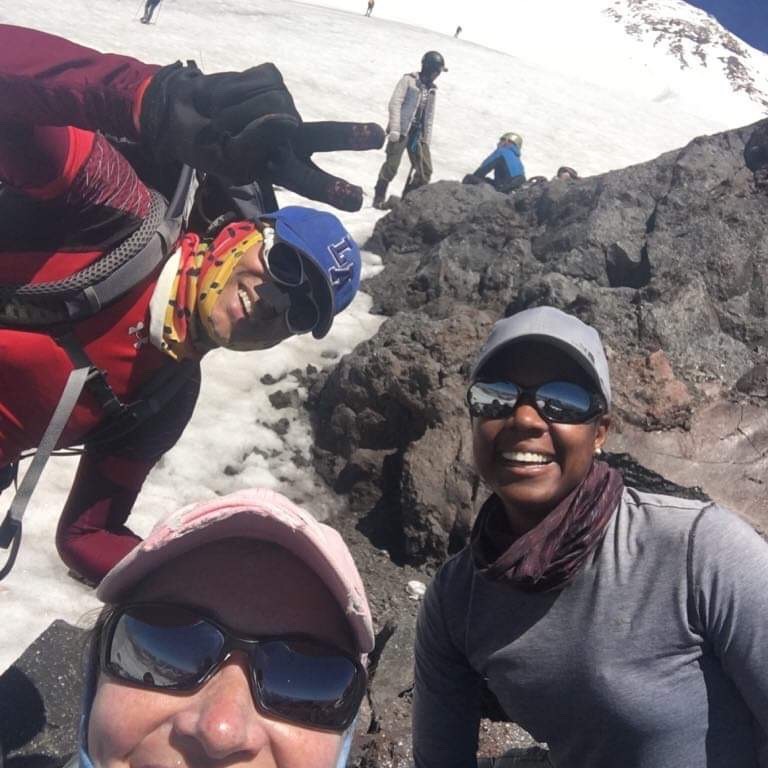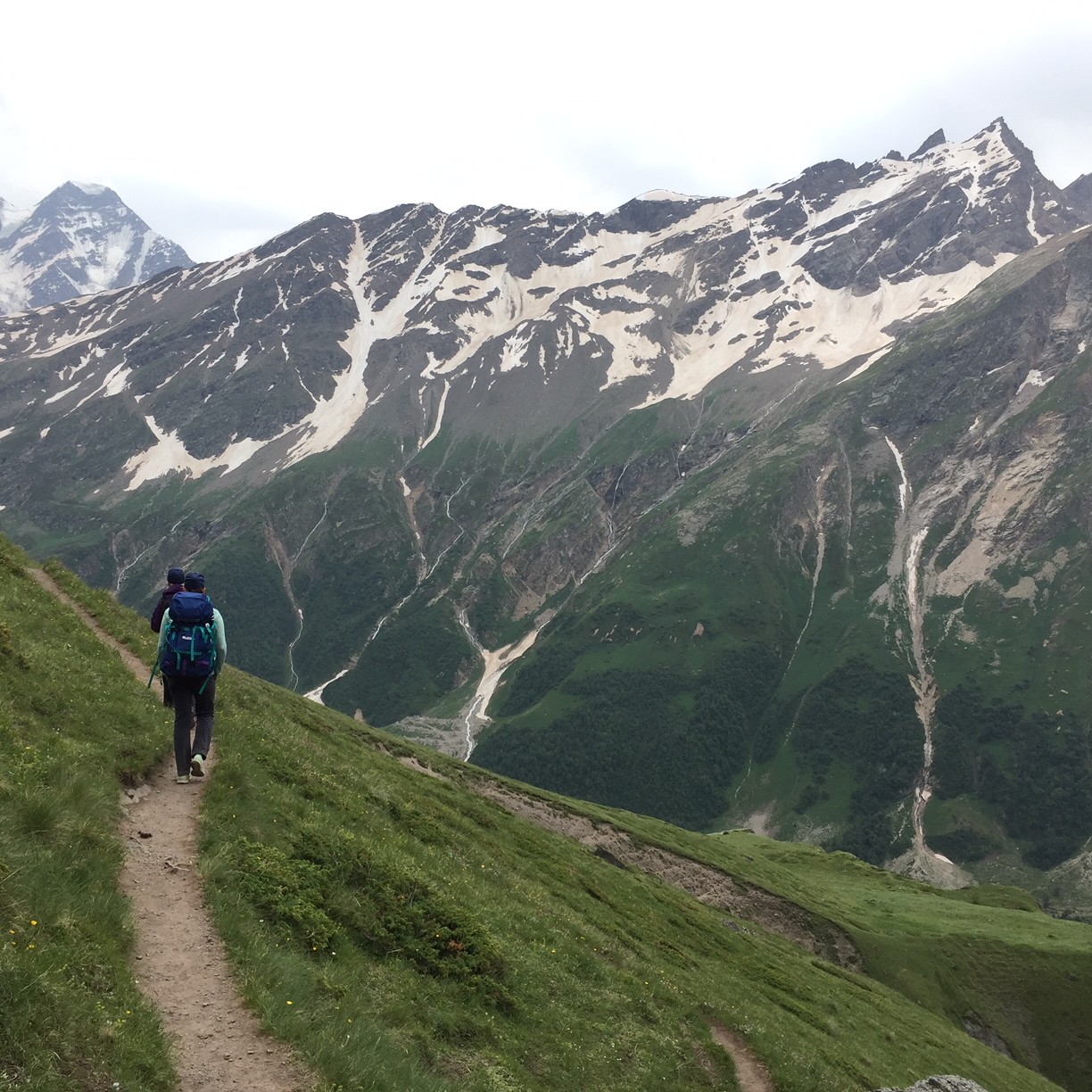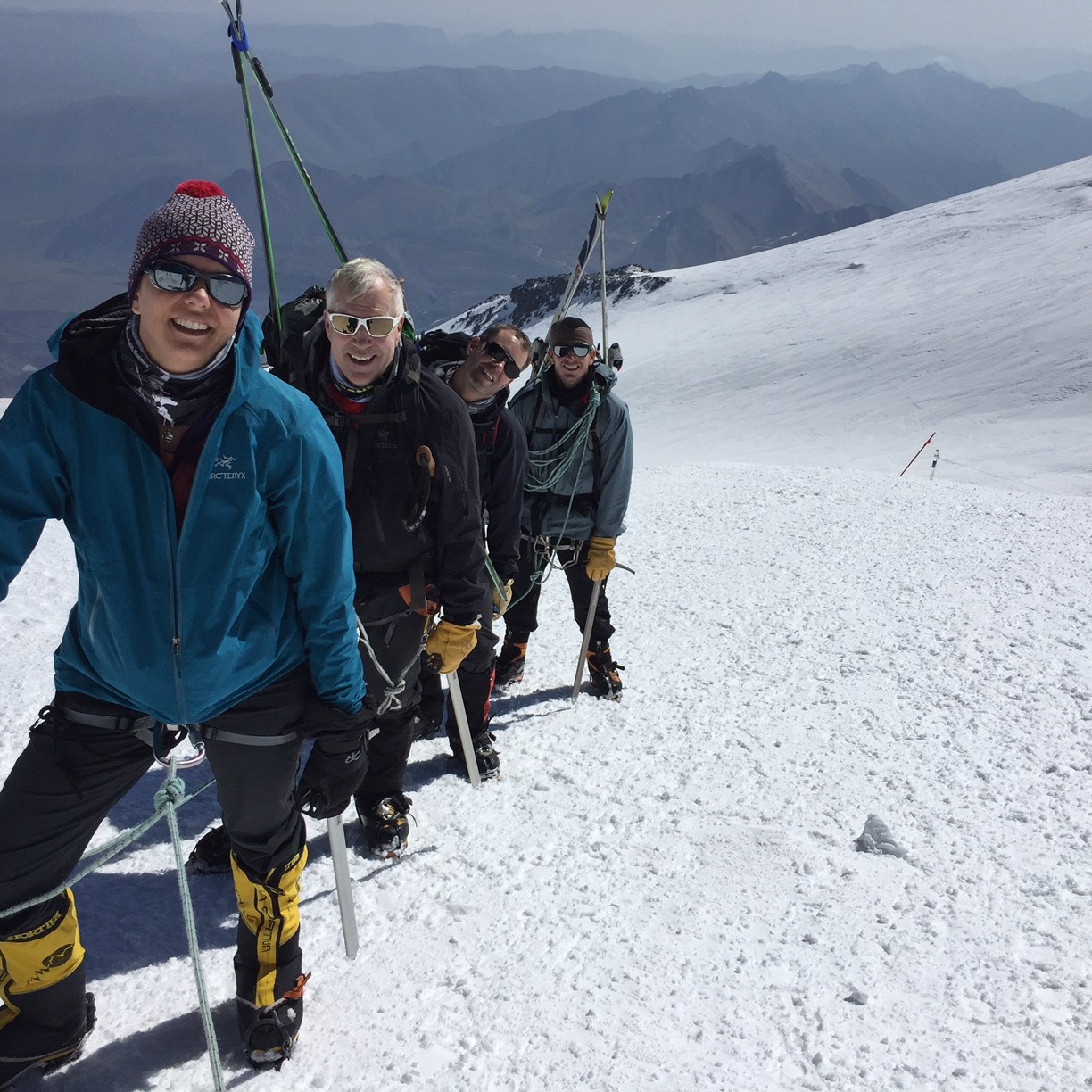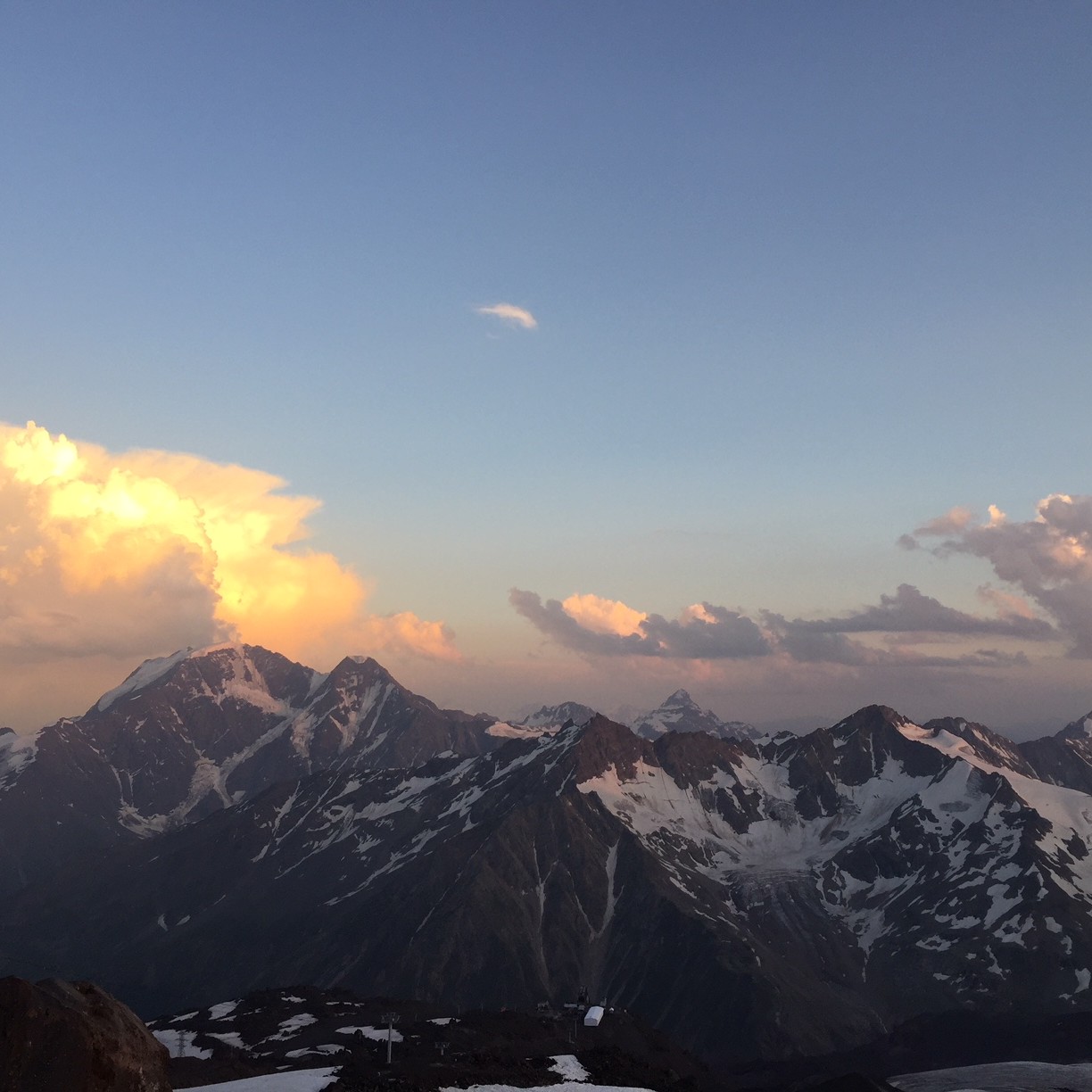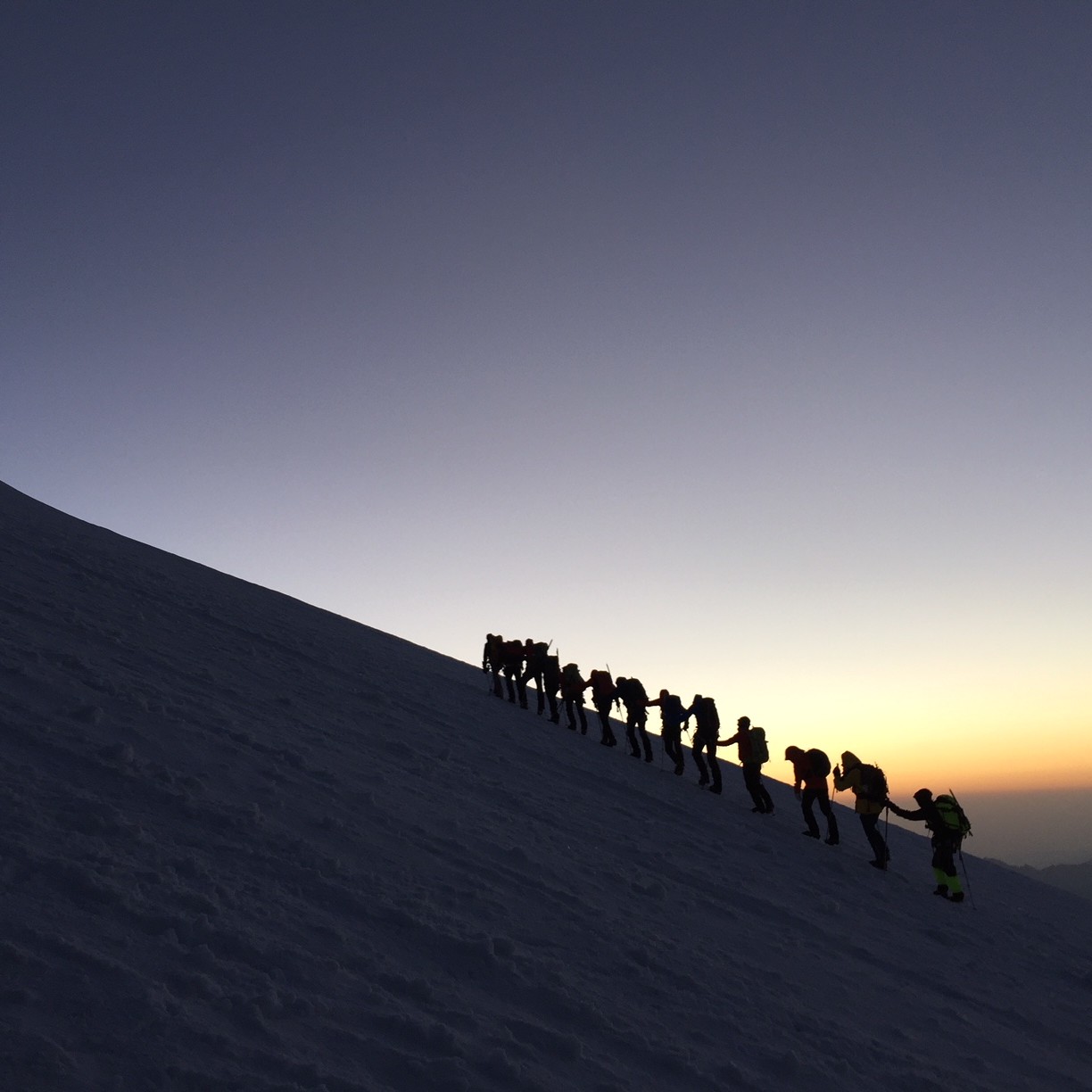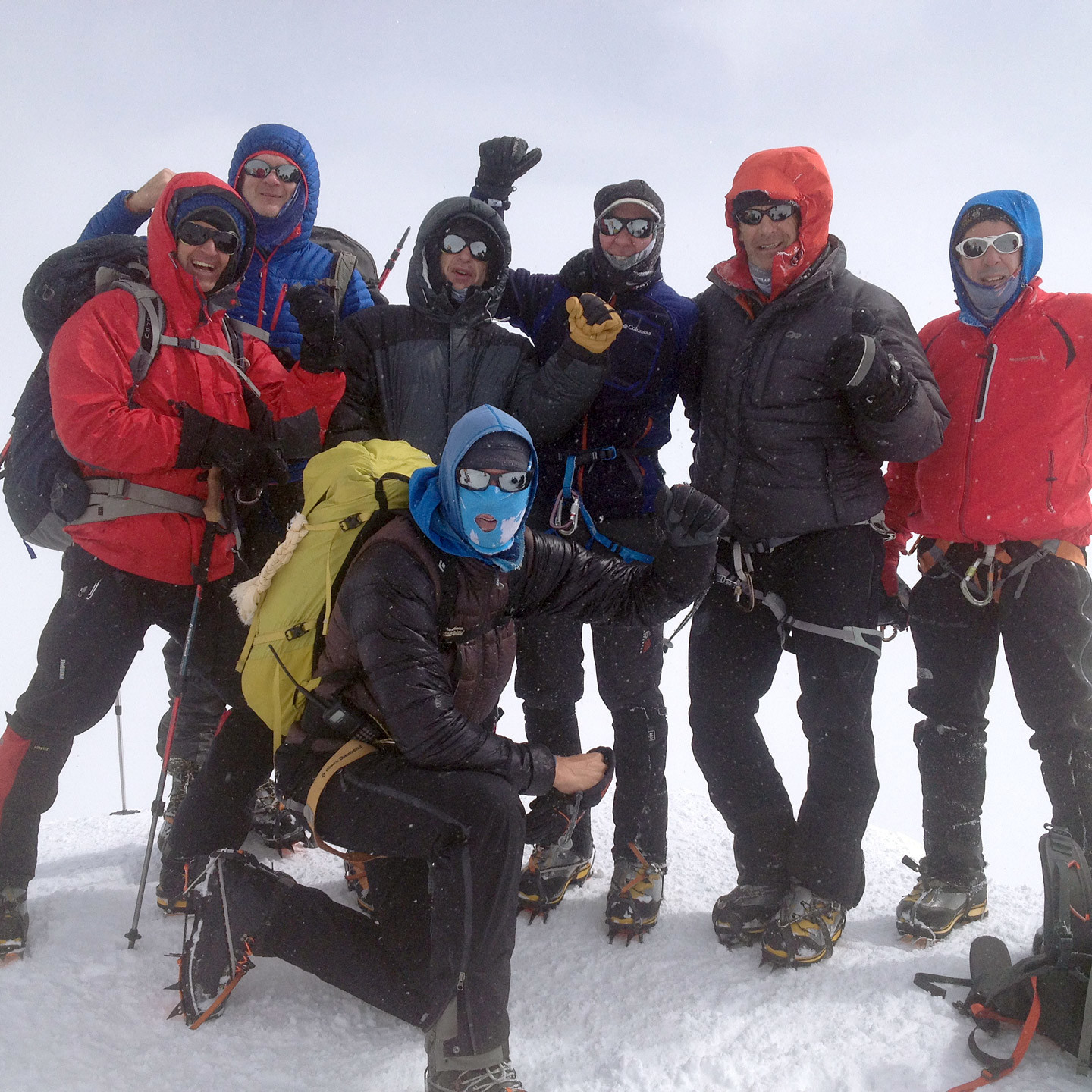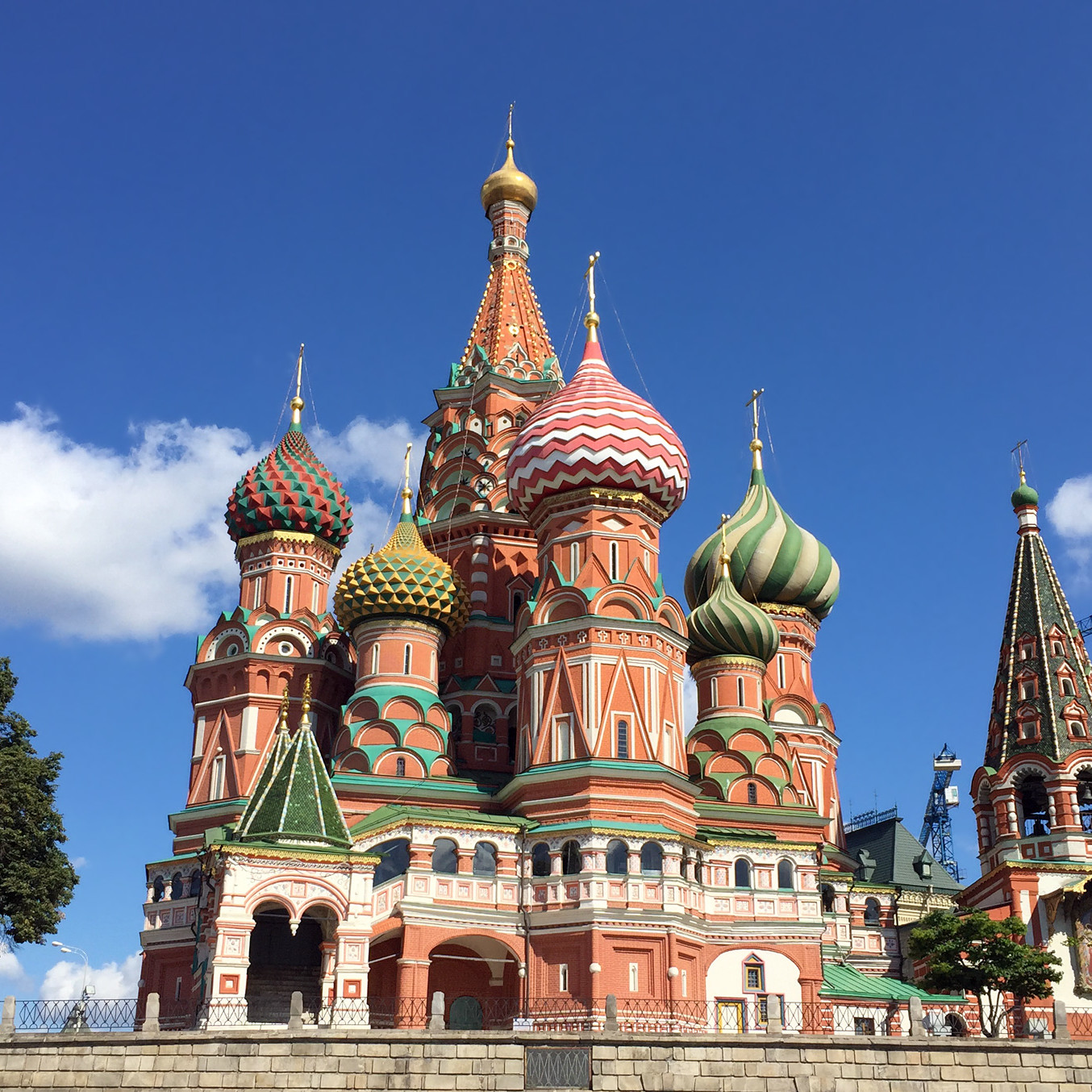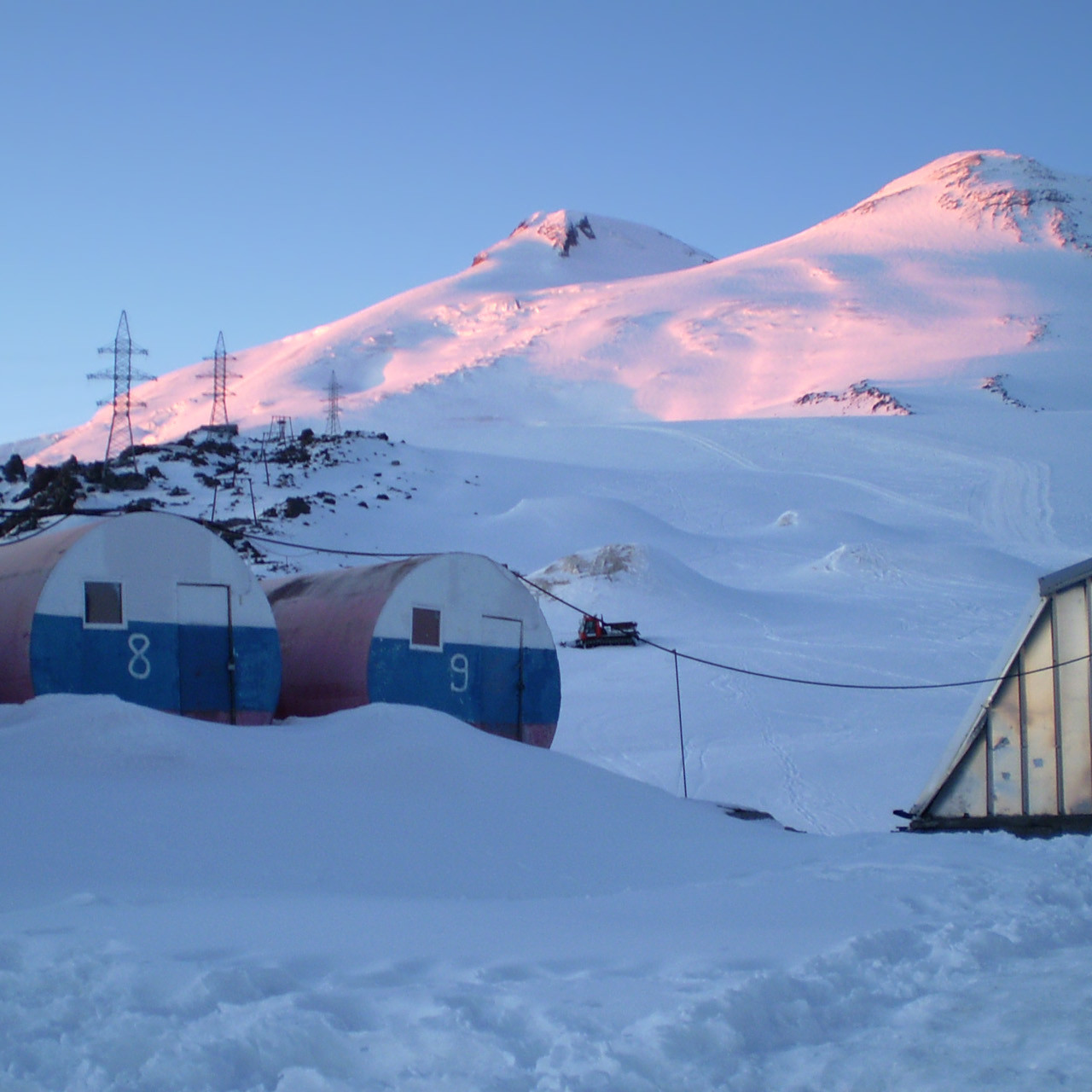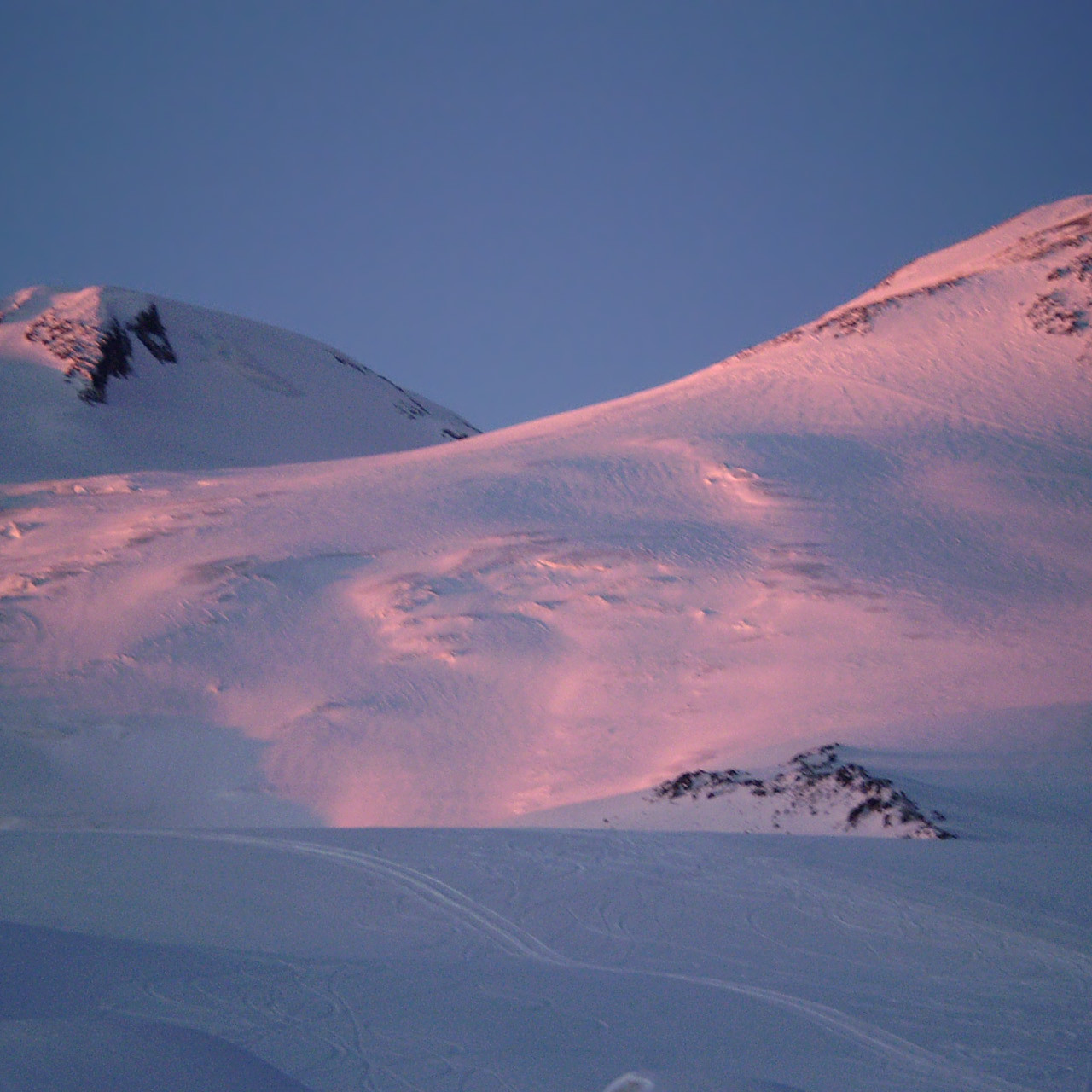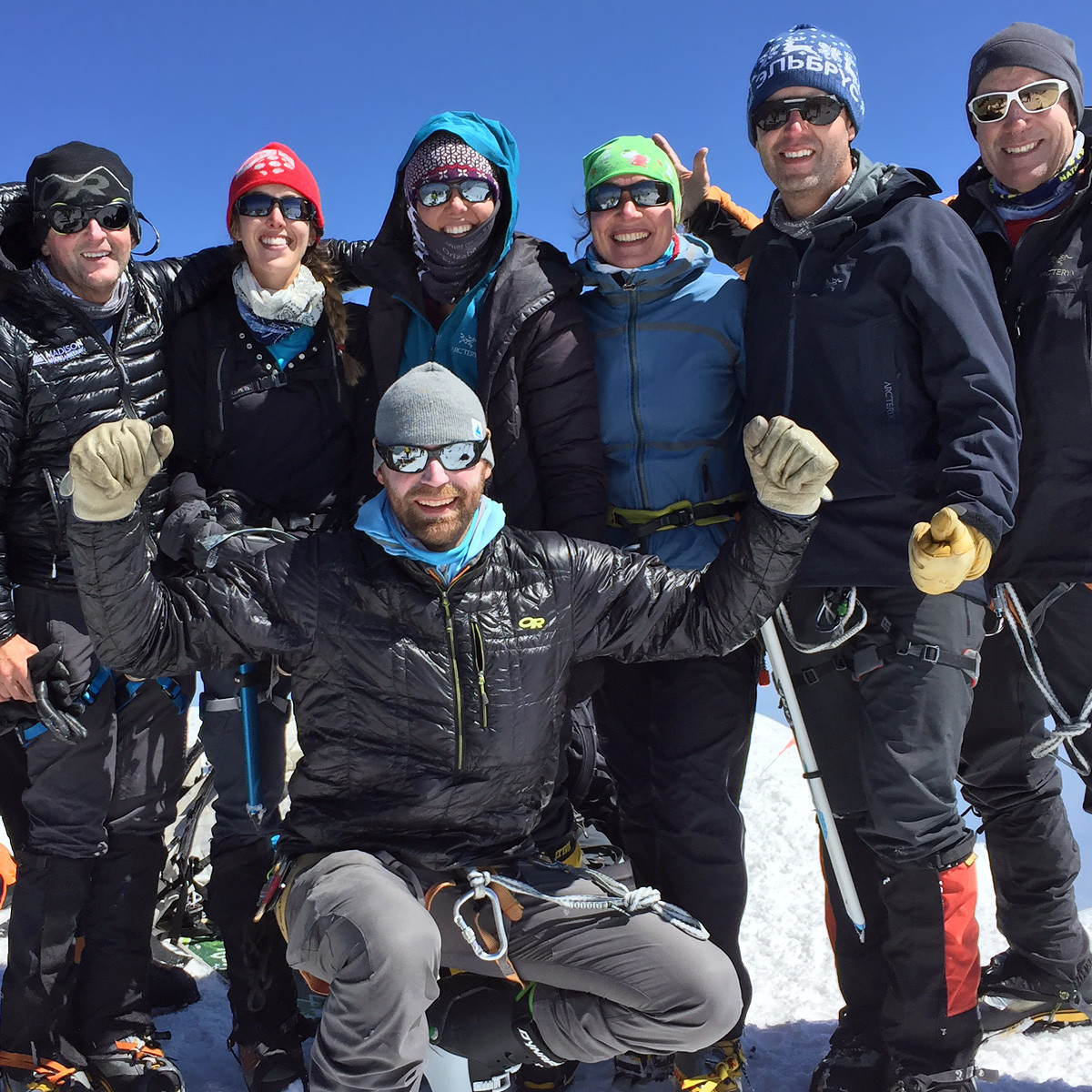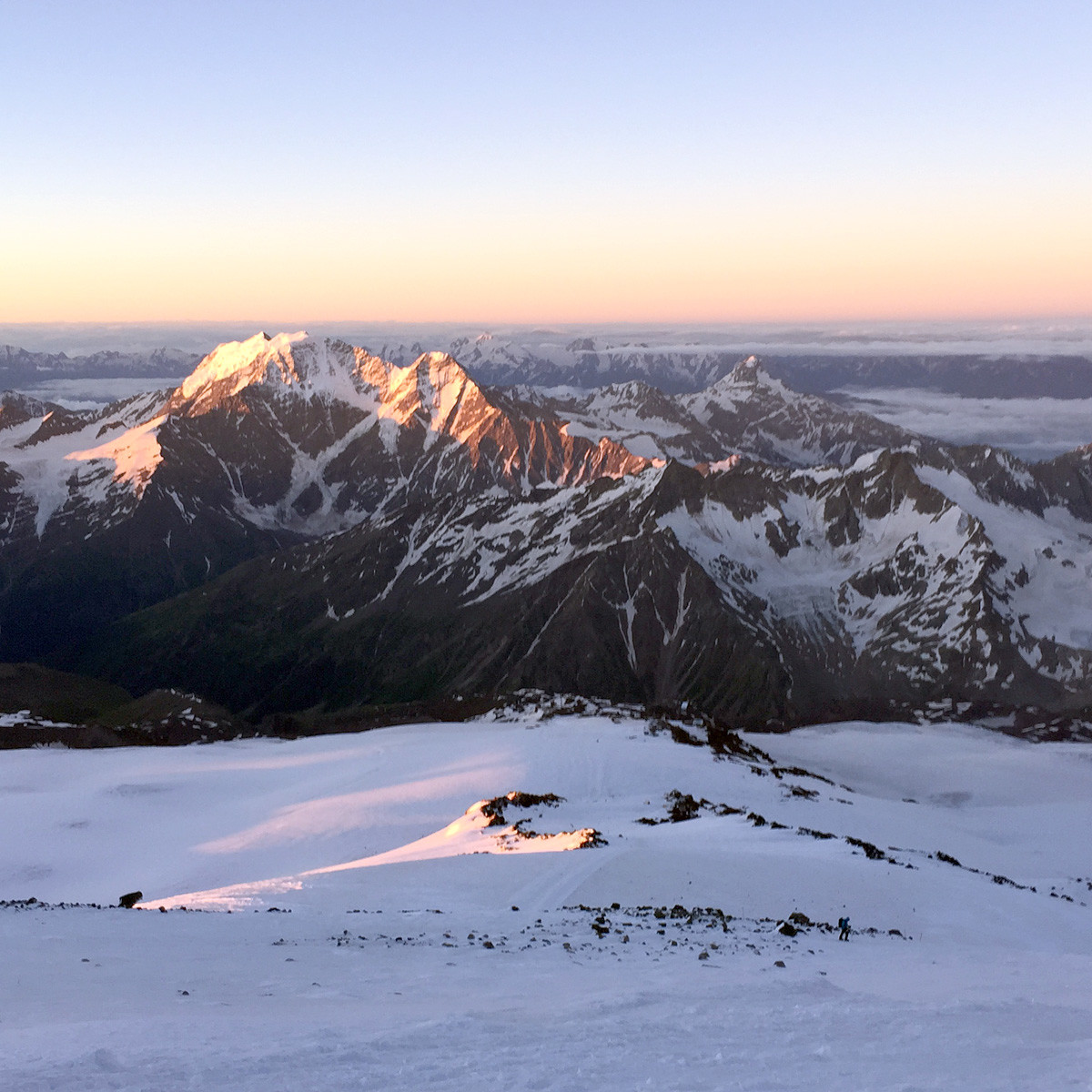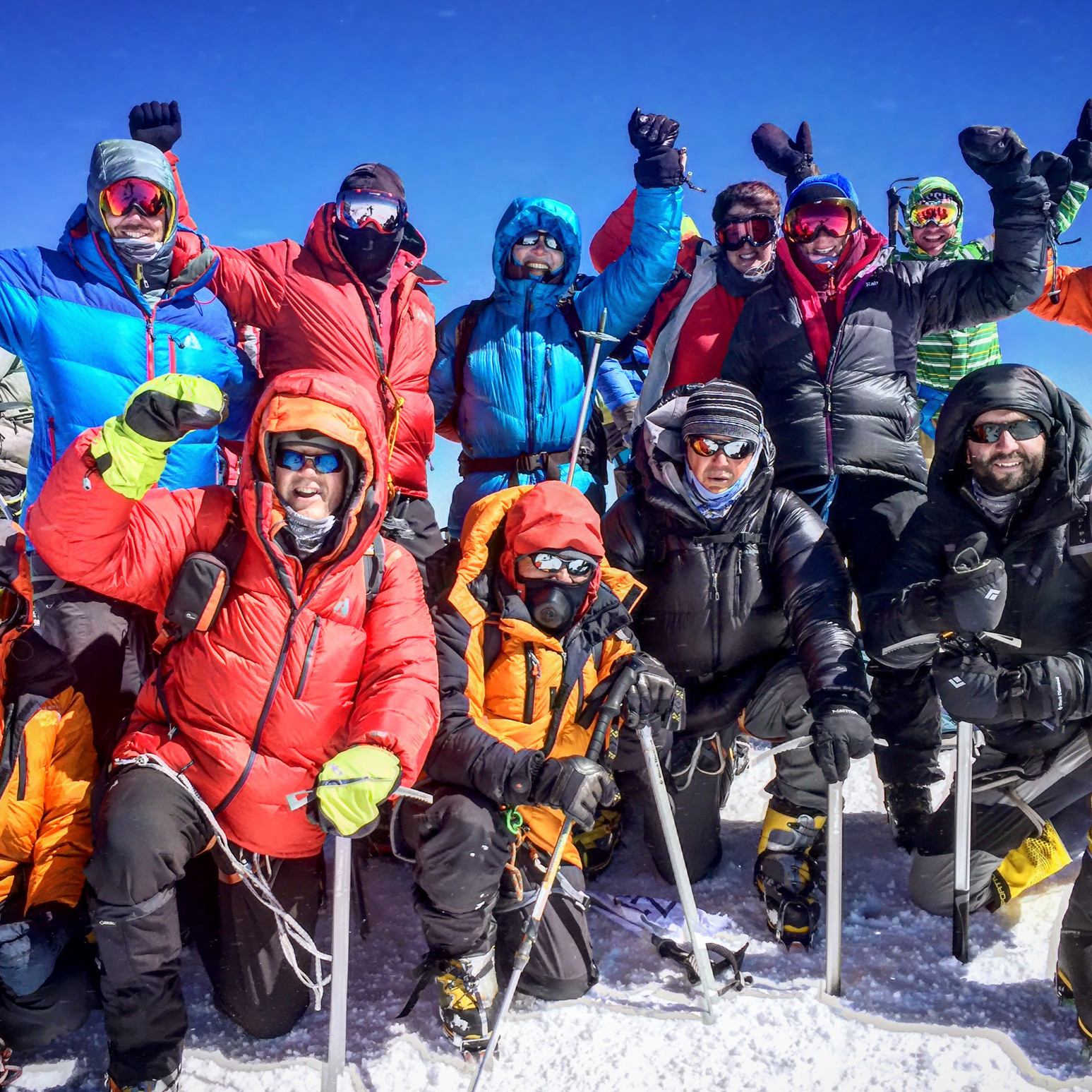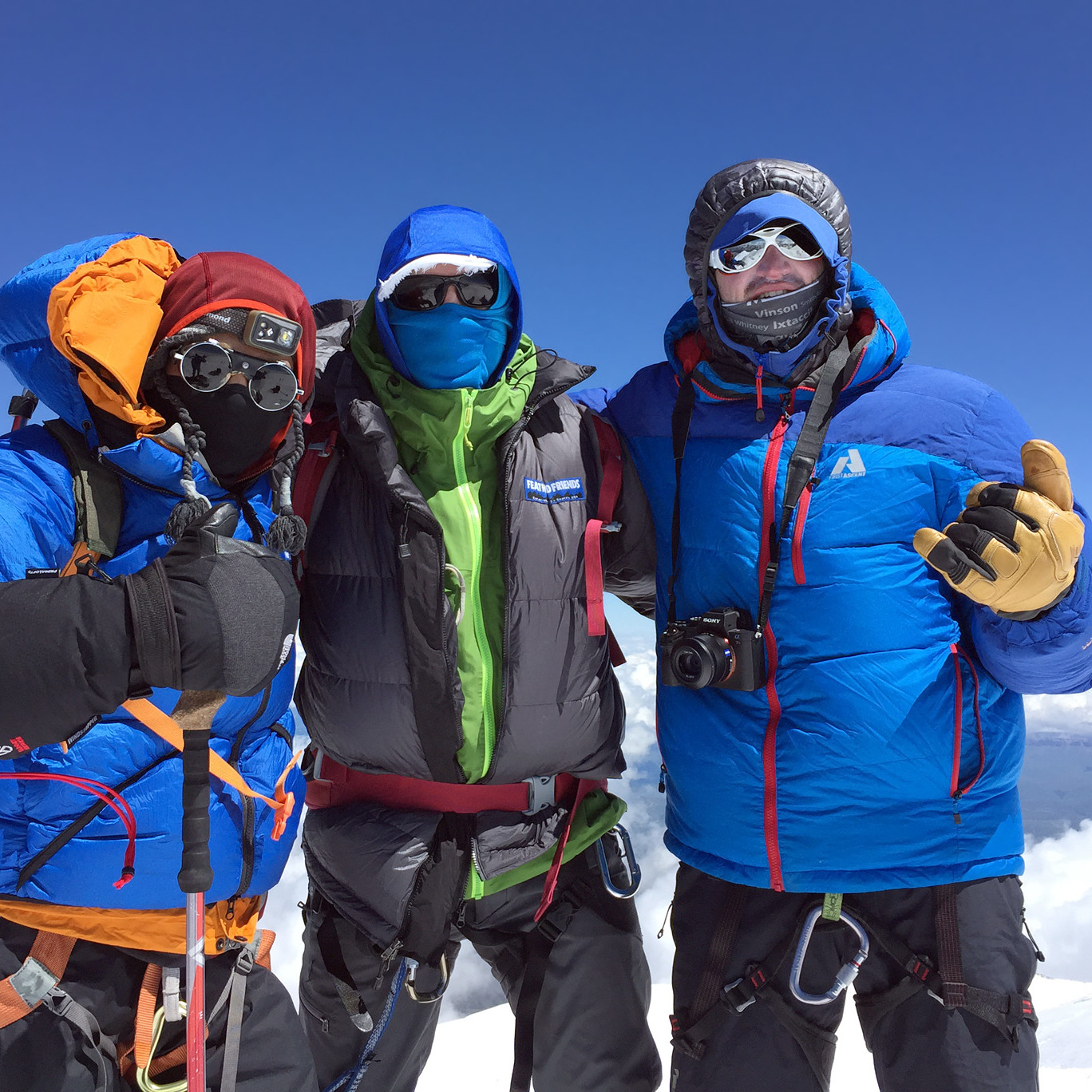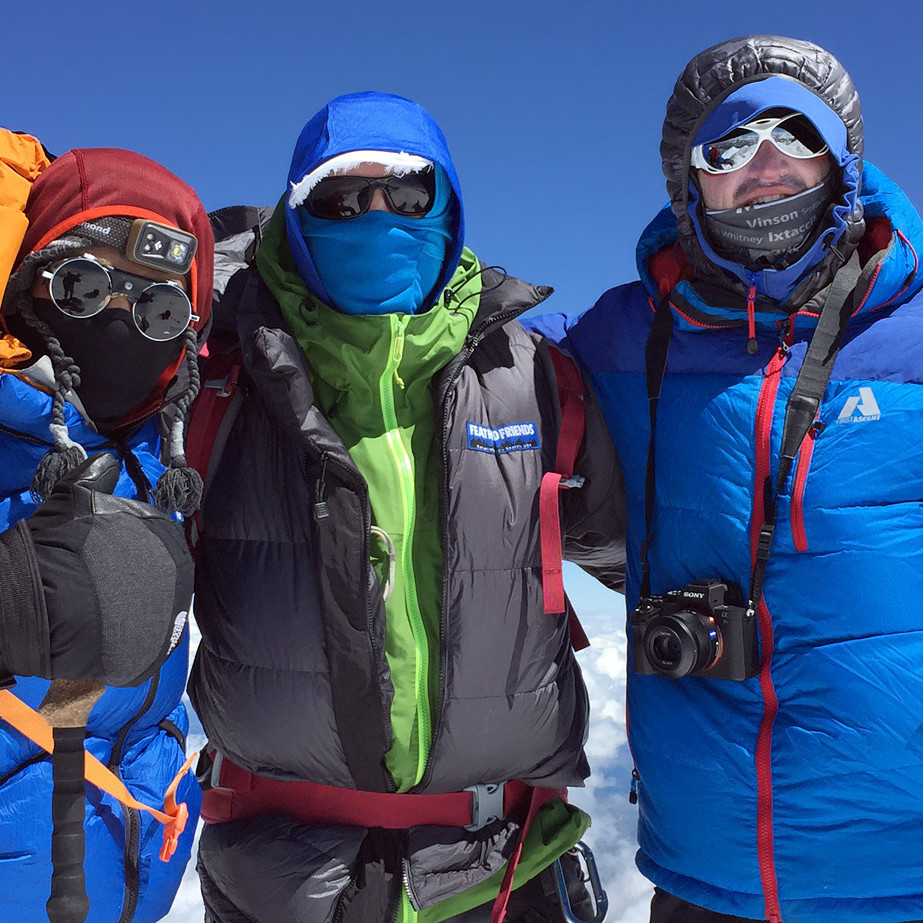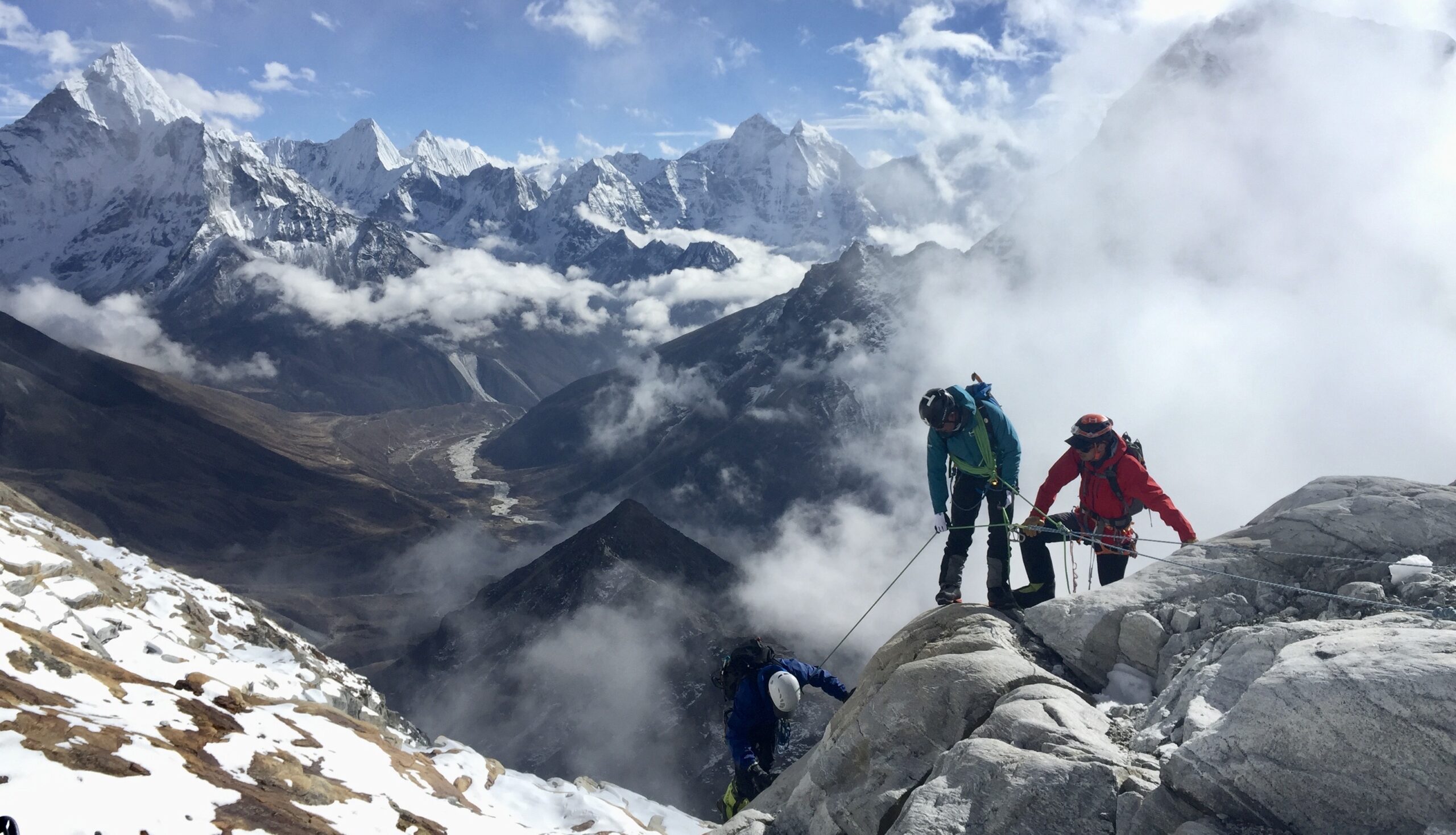City Tours & Nepal Extensions
Nepal is one of the world’s most popular destinations. With incredible landscapes and rich culture, once there, it is truly worth seeing as much of the country as you can. We can seamlessly organize a variety of fantastic customised excursions and extensions for you, either prior to or after your expedition.
Contact us for any requests you have, so we can plan them seamlessly for you.
Pre-Trip Full Day Kathmandu Cultural Tour
$250 per person
Kathmandu is one of the most exciting, culturally rich cities in the world. Unique and overflowing with sights, smells, sounds, and tastes, it’s both chaotic and charming. It is a city of true contrast that needs to be experienced to be understood. During our Kathmandu Cultural Tour, an English-speaking guide will show you the best history and culture the city has to offer.
Paragliding in Pokhara (Annapurna Region)
Take in the spectacular views of the Himalayas while paragliding over Lake Pokhara. Nepal offers some of the best flying in the world, with low-lying valleys, high, cold mountains, and natural rising thermals that you can share with the hawks! You can fly with world-class pilots in tandem or stay longer and benefit from their wealth of experience, and you can get your international license in Nepal. Spend a few days at the Lake and truly unwind with a change of scenery.
Trek the Annapurna Circuit or Sanctuary Walk
On a mission to tick off the best treks in the world? Why not take advantage of your fitness and experience the Annapurna region with either the Sanctuary Walk (slightly shorter and slightly lower altitude) or the Annapurna Circuit (slightly longer and crosses the 5,416m Thorong La pass into the Mustang region).
Jungle Safari in Chitwan National Park
One of Nepal’s greatest drawcards, Chitwan National Park is a World Heritage Site that protects 932 sq km of forest and grasslands. It is arguably the best place in Asia to view wild game, including horned rhinos, monkeys, deer, and over 500 species of bear. If you are lucky, you may even spot a leopard, sloth, elephant, or even the elusive Bengal tiger!
Visit the Upper Mustang
Trekking in the Upper Mustang is a very rare privilege, and it has only been open to non-Nepali for just over 15 years. Here, you will experience the way of life of true mountain people, who for hundreds of years had very little contact with the rest of Nepal and retained their rich cultural heritage. In many ways, visiting the Upper Mustang is similar to Tibet, as geographically, it is part of the Tibetan plateau.
Helicopter Options
Many of our climbers say that one of the best experiences of their entire expedition is taking a helicopter flight back down the Khumbu Valley and getting an aerial view of the trek, the peaks they’ve been climbing and the mighty Himalayan range. It is, without doubt, one of the most scenic, adventurous mountain flights in the world.
Further, while people initially think they will want to undertake the 3 day, 40 mile trek back down the valley, we’ve found that after a long expedition in mountains, the draw of civilisation, getting back to family and friends & enjoying that well-deserved beer can be irresistible.
We have a number of options available for you:
One Way Helicopter from Ama Dablam Base Camp to Lukla*
$2,995 USD
A helicopter flight from Ama Dablam Base Camp to Lukla avoiding the three day walk back down the valley. From Lukla you will catch a regularly scheduled fixed-wing plane back to Kathmandu either that day or the following. (Your domestic fixed wing flight is included in your expedition costs)
One Way Helicopter from Base Camp to Kathmandu*
$4,995 USD
For climbers who are keen to get back to Kathmandu and homeward bound as quickly and efficiently as possible at the end of the expedition, we can arrange a helicopter for you directly from Ama Dablam Base Camp all the way to Kathmandu.
Family & Friends Options
We welcome you to invite friends and family to join you for all, or part of your 3 Peaks expedition.
The benefits are:
- The joy of sharing this once in a lifetime experience with your loved ones
- Lessening the time apart
- Puts family at ease as they get a first hand understanding and empathy of the nature of your expedition and goal
Everest Base Camp Trek (with Lobuche)
$4,495 USD
The Everest Base Camp trek is widely heralded as the best trek in the world and for good reason; it’s beautiful, challenging yet achievable, and incredibly scenic. Roughly 40 miles/70 km you will trek through lush green pastures, blossoming Rhododendron forests and the most spectacular mountain terrain in the world.
Adding 2 extra days to the usual Everest Base Camp schedule family and friends are welcome to stay with you the entire time and relax at Lobuche Base Camp while you climb (time apart is minimal)
Following your ascent you will journey together into Everest Base Camp Proper at 17,600ft/ 5,500m where, being affiliated with an Everest climbing expedition, your friends and family are also able to enter and spend 2x nights within Base Camp, something the vast majority of trekkers never experience.
This allows them to get a sense of the Everest base camp scene and community and what goes into an Everest expedition. If they are feeling good you have the added option to join our climbing clinic, scale Kala Pathar the morning they leave base camp for stunning views of the Everest Massif, Lhotse and Nuptse.
Your family and friends can then splinter off and return down valley if they are pressed for time with our other trekkers, spend extra nights at Base Camp, do the Gokyo Extension or join you for the entire 3 Peaks Circuit.
This is a sample itinerary only. Your actual daily schedule will be strategically planned to account for the best weather and summit windows etc. We begin our expedition in Kathmandu, Nepal before flying to Lukla in the Khumbu Valley. Our expedition ends in Kathmandu where CTSS will cover one night accommodation. We recommend booking a flexible return airfare.
- Apr 3 Team Arrives
- Apr 4 KTM Day
- Apr 5 Fly to Lukla/Phakding
- Apr 6 Trek to Namche
- Apr 7 Rest
- Apr 8 Trek to Tengboche
- Apr 9 Rest
- Apr 10 Trek to Pheriche
- Apr 11 Rest
- Apr 12 Trek to Lobuche Base camp
- Apr 13 Acclimatization Trek to Lobuche High Camp
- Apr 14 Move to Lobuche High Camp (optional - family and friends are welcome to stay in the better equiped Base Camp if they prefer)
- Apr 15 Rest Day
- Apr 16 Climbers summit, family & friends rest day
- Apr 17 Trek to EBC
- Apr 18 Everest Climbing Clinic & Explore BC
- Apr 19 Trek to Pheriche
- Apr 20 Trek to Namche
- Apr 21 Trek to Lukla
- Apr 22 Fly Lukla to KTM
- Apr 23 Fly Home
- Apr 24 Contingency Day
3 Peaks Trekking Circuit
$5,495 USD
Family and Friends often love to stay with you for your entire expedition and the 3 peaks trekking circuit is an ideal adventure to do this with you as it allows your loved ones to not only do the most spectacular trek in the world in Everest Base Camp but explore off the beaten track elements of the Khumbu Valley as they trek with you into Pokalde & Island Peak base camps too. These are seldom seen valleys off the main route full of authentic Sherpa culture minus the crowds.
Given the alpine climbing starts, the time you actually spend apart (whilst you are climbing and summiting) is actually minimal and a great time for them to kick back with some Chai tea and enjoy being in the majestic Himalaya far from the madding crowds
This is a sample itinerary only. Your actual daily schedule will be strategically planned to account for the best weather and summit windows etc. We begin our expedition in Kathmandu, Nepal before flying to Lukla in the Khumbu Valley. Our expedition ends in Kathmandu where CTSS will cover one night accommodation. We recommend booking a flexible return airfare.
- Apr 3 Team Arrives
- Apr 4 KTM Day
- Apr 5 Fly to Lukla/Phakding
- Apr 6 Trek to Namche
- Apr 7 Rest
- Apr 8 Trek to Tengboche
- Apr 9 Rest
- Apr 10 Trek to Pheriche
- Apr 11 Rest
- Apr 12 Trek to Lobuche base camp
- Apr 13 Trek to Lobuche High Camp
- Apr 14 Acclimatisation trek to Lobuche High Camp
- Apr 15 Rest Day
- Apr 16 Rest while climbers summit and descend Lobuche BC
- Apr 17 Trek to EBC
- Apr 18 Rest at EBC - Training
- Apr 19 Trek to Lobuche
- Apr 20 Trek to Pokalde via Kongma La
- Apr 21 Rest at Pokalde while climbers summit & descend to Chhukung
- Apr 22 Trek from Chhukung to Island Peak BC
- Apr 23 Rest at Island Peak BC while climbers summit and return Chhukung
- Apr 24 Trek Chhukung to Pangboche
- Apr 25 Pangboche to Namche
- Apr 26 Namche to Lukla
- Apr 27 Lukla flight to KTM
- Apr 28 Fly home
- Apr 29 Contingency day
- Apr 30 Contingency day
Ama Dablam Travel Guide
Expedition Meets in: Kathmandu, Nepal
Continent: Asia
Currency: Nepalese Rupee
Population: 28million
Official Language: Nepali
Seasons to climb: March to May = Spring | September to December = Fall
Things you Need to Know:
Tourist Visas
Nepal’s visa policy is relatively relaxed and straightforward. Citizens of almost any country can obtain a visa on arrival at Kathmandu’s Tribhuvan International airport or at any road border. You can also obtain a visa at the Nepal embassy or consulate in your home country.
For most of our expeditions, you will need a 30-day (US$50) or 90-day (US$125) visa.
Tourist visa can be extended for a maximum period of 150 days in a single visa year (January – December)
Visa requirements can change at any time, so it is worth checking with your travel agent or the closest embassy for the most up-to-date information.
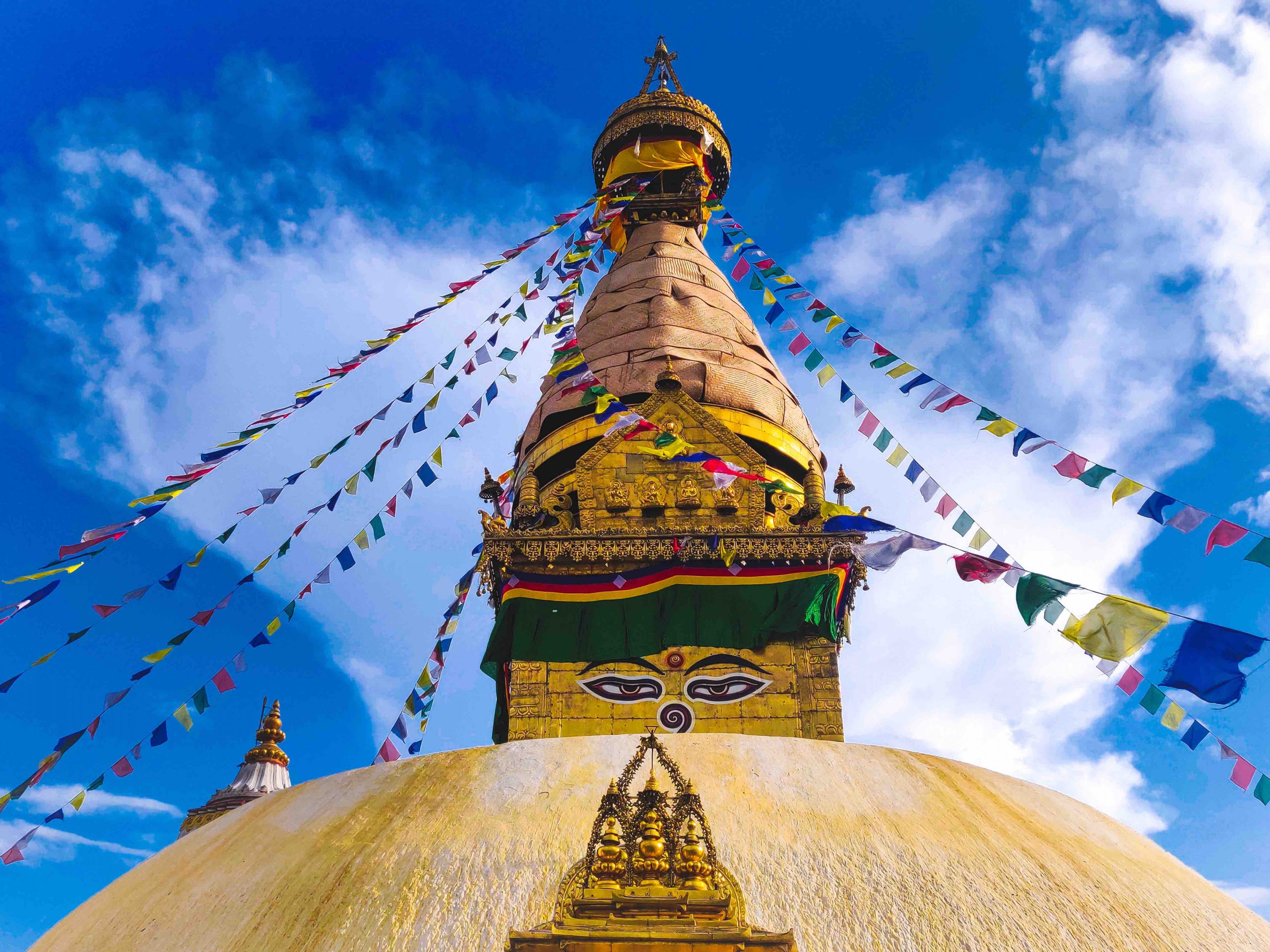
Getting there
You will need to fly into Kathmandu on or before the official arrival day of your expedition. A CTSS representative will pick you up at the airport, so please advise us well in advance of your arrival time and flight number. If you experience a delay travelling, let us know immediately.
Domestic Flights
Your domestic flights into the Khumbu (to and from Lukla) are included in your expedition and will be booked by us on your behalf. Due to the mountainous terrain and low-lying clouds, there can be weather delays into and out of the Khumbu Valley, which is why we recommend booking flexible return airfares home at the end of your expedition.
Money
In Kathmandu, there is good access to ATMs and credit card facilities at most shops and restaurants, but you should still have adequate Nepalese rupees and carry small denominations. Once you are in the Khumbu, access to ATMs is very limited, and while they can be found in the bigger hubs like Lukla and Namche, outages can be common, so it’s best not to rely exclusively on being able to access cash as you go. Responsibly carry adequate amounts of local currency for your needs and reserves for emergencies. We advise our clients in our team emails as to how much cash they should bring. USD is also selectively accepted..
Tipping
Tipping has become more common in Nepal in recent times due to increased tourism.
It is customary for your guides, porters, and Sherpa staff. To make this process easier, CTSS will collect and distribute fairly a Sherpa Tip Pool and advise you on current amounts. In major tourist areas, hotels and restaurants, you will often see a service charge of 10% – this usually equals a tip. In smaller, local eateries, it’s rare to see this, and then it is up to your discretion.
Adapters
Nepal actually uses three plug types – C (two round pins), D (three round pins in a triangular pattern) & M (three round pins), so consider purchasing a reliable universal adapter that gives you all the options. Also, it’s VERY important to note that Nepal operates on a 230V supply and a supply voltage of 50Hz. If this differs from your home, buy a voltage converter to avoid frying your devices! For instance, the standard voltage in the US is 120V, and some older devices won’t handle a 230V supply.
Tap Water
The tap water and river water in Nepal are unsafe to drink, so please use bottled water, purification tablets, or boiled water for drinking and brushing your teeth. Make sure you drink plenty of water. Your body requires more at altitude.
Personal Safety
Despite perceptions, Nepal is a relatively safe destination for travellers, and there is a low rate of serious crime. However, you should still take sensible precautions.
Watch out for pick-pockets and bag-snatching, particularly in airports, on buses, and in popular tourist areas like Thamel, Sanepa, and Kupondol in Kathmandu. Avoid walking on your own and don’t carry or flaunt large sums of cash. Keep valuables in a hotel safe if possible. Behave in Nepal as you would at home, err on the conservative side in terms of dress and behaviour. Be respectful and always let your Guide know if you’re going to venture out and what your plan is. In general, we prefer to travel and stick together as a team.
Vaccinations
Consult your doctor or travel clinic in your home country for updated information on immunizations for Nepal and China. The usual recommended vaccinations are Diphtheria-tetanus, polio, measles, mumps and rubella, meningitis, hepatitis A and B, cholera, typhoid, and rabies. Malaria shouldn’t be a problem in Kathmandu or on the climb. If you plan to travel to lower-elevation areas before or after the climb, you should consider a malaria chemoprophylaxis.
Ama Dablam Advice from Mike Hamill
A Personal Welcome to 'Climbing the Seven Summits' Ama Dablam Expedition from Mike Hamill
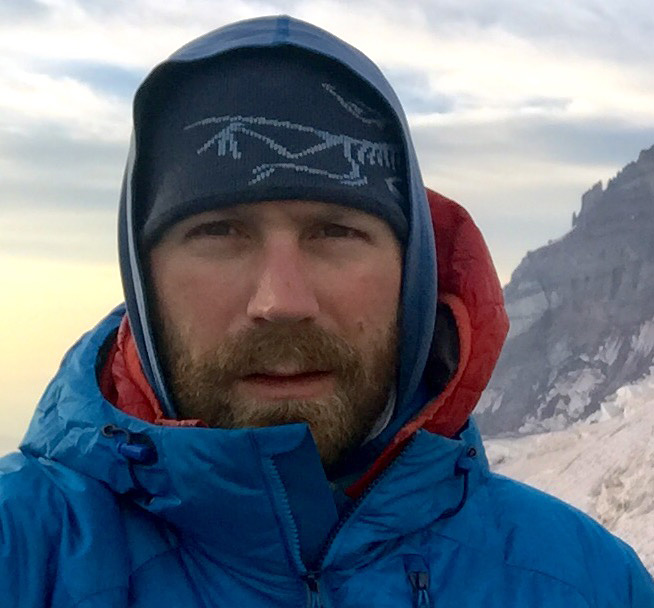
Ama Dablam holds a special place in my heart. My first time on the mountain I was climbing fast and light with a few guide buddies after getting back to Kathmandu from Cho Oyu. We were well acclimatized so were able to move quickly up the mountain. It is always a treat as a mountain guide to get out with friends and push yourself in the mountains; especially on a peak as beautiful as “Ama”.
I don’t think I fully understood the steepness and exposure that climbing on Ama Dablam entails. Although i really enjoy this aspect of the climb, on my first expedition to the mountain I was caught off guard because it is much more committing than other popular Himalayan “trade routes”. This is a serious climb that needs to be respected. Don’t underestimate it. However, if you show up prepared you will be rewarded with some of the most beautiful climbing in the world!
A climb of Ama Dablam is really the best way to experience the Khumbu valley and it’s culture. What better excuse than a climb as beautiful as this to venture into the most stunning and famous valley on the planet. Ama Dablam is also a great stepping stone to Everest because it mimics the steeper sections of the Everest climb.
We look forward to sharing this beautiful Himalayan giant with you and showing you the wonders of high altitude climbing!
All the best,
Mike Hamill
- Don’t underestimate the weather on Elbrus, make sure you invest in your warm gear and you carry it with you on the mountain even if you think the weather is going to be nice all day. It can get very windy on Elbrus and temperatures can drop quickly.
- Make sure your down parka is the last thing to go into your pack so it’s the first thing you can pull out. Put it on at every rest break before you start to get cold. It takes less energy for your body to maintain its warmth, than to have to warm up again once you start to notice you are getting cold.
- Look for the steps of climbers ahead of you and try to step in their steps. It’s much harder to kick in your own staircase on the steeper sections than use the one that’s already in place. As you start up, take a quick moment to look for these tracks to save yourself some energy. It’s worth conserving your energy even if you are at the start of your day.
- If you are tempted to take the snow cat on summit morning, don’t feel like you are “cheating” in anyway. Your previous acclimatization days will have put you at the same high point as the snow cat drops you off so you have still climbed every step of the mountain one way or another.
- If you are a skier or snowboarder I highly recommend the ski descent, it’s a memorable way to descend one of the Seven Summits (and a bonus claim to fame) as you can ski right off the summit. Not to mention its a much faster, more fun way back to the hut for a well deserved celebration.
Ama Dablam Training & Prerequisites
Prerequisites:

We require that our participants have a solid foundation in cold weather management and strong physical fitness. Cold is the one of the biggest hazards for this expedition and everyone needs to be comfortable taking care of themselves independently. It is also important that you have prior experience with cramponing, harness use and walking on snow. A strong rock-climbing base will also assist with the technical sections, but strong experience with using a fixed line will also suffice. The exposure on Ama Dablam is extreme so being comfortable with heights, steep terrain and big exposure is a must.
Participants need to have excellent fitness, and the mindset to be away from home for 3 weeks or more, and a desire for rugged adventure travel. An Ama Dablam Summit climb is very physically arduous and needs to be taken very seriously. Participants need to be in the shape of their lives and be able to climb for 12-15 hours through the cold carrying a pack on summit day.
Nepal is a very remote and rugged place with few of the creature comforts we have come to expect. We try to give our climbers nice amenities when possible but, at the end of the day, this is true adventure travel and you need to have patience and be able to roll with the punches.
Guides will work with clients throughout the expedition to provide safety, advice, logistics, technical guidance, and information to best ensure the clients’ success.
If you want to join this expedition but don’t have the requisite skills, we can work with you to get you up to speed prior to the expedition. Please let us know how we can help!
Physical Training
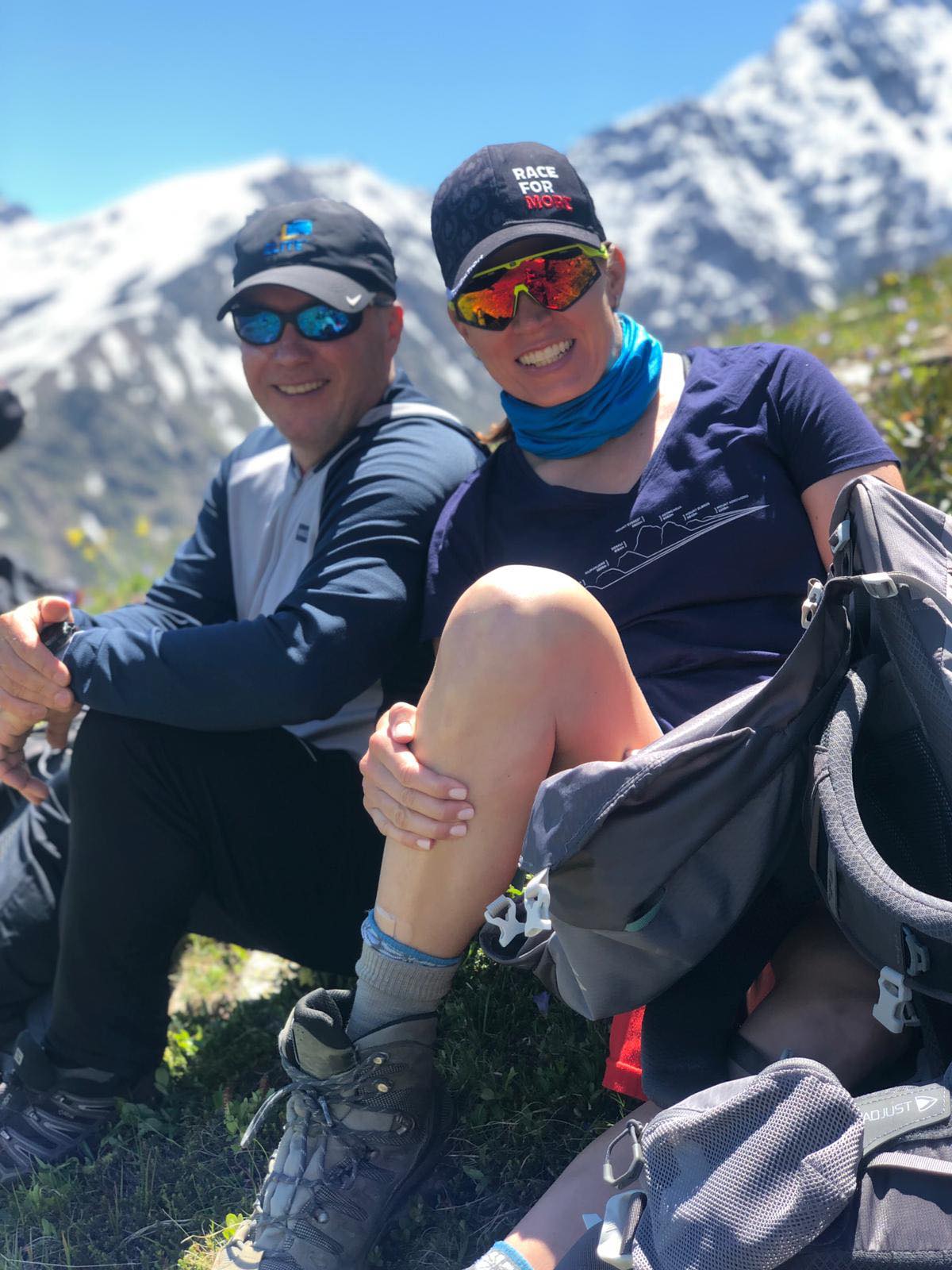
You need to be very physically fit and able to dedicate time to ‘climbing specific training’ in the lead up to your expedition. Being in top shape will also ensure you enjoy your climb, feel good throughout and get the most out of the experience.
It is vital that your training closely simulates what you will be doing on the mountain. Traditional gym workouts or general fitness plans aren’t targeted enough. Instead you need to emulate long physical days (8hrs +) in the mountains
We recommend that you:
- Start specific mountaineering training at least 3 months in advance
- Train at least 5 days a week for an hour or more
- Focus on high volume but low intensity training
- A good goal is to be able to comfortably climb 1,500 vertical ft per hour with 6-8kg, 15lbs day pack
- Schedule a few weekends where you can do two or more full days back to back. Multi day hikes with good elevation are ideal.
Mindset
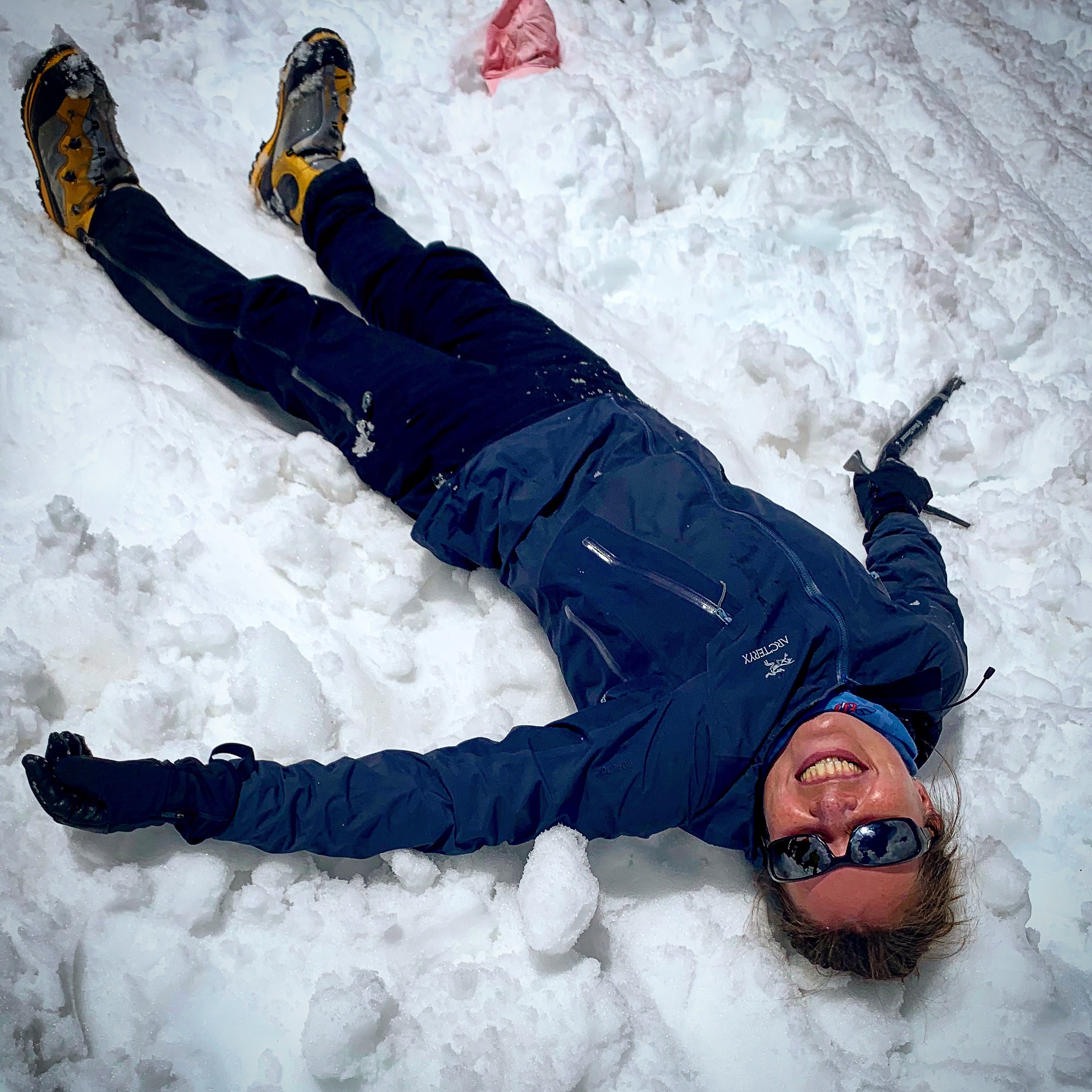
Mindset and mental preparation are integral to your success on any peak.
You should be prepared:
- To be away from home/work for 2 weeks with short periods of being out of range
- Have a desire for rugged adventure travel
- Be open to receiving and deferring to guidance, support and advice from your guides/expedition leaders (even if you are an experienced mountaineer)
- Be comfortable having open conversations with your guides
- Be able to work well in a team environment by being supportive and respectful of fellow team mates
- Be humble, respectful and considerate even under pressure
How to Choose The Right Ama Dablam Expedition
Ama Dablam is one of the most beautiful and iconic peaks in the world and a great place to test your mettle. Whether you are a newer climber or very experienced, this climb has something for everyone. Many of our Everest Summiters have completed the Ama Dablam climb in their journey to the Everest Summit, while others use an ascent of Ama Dablam as an excuse to come back to the Khumbu after their Everest climb. Ama Dablam is a crowd favorite and it makes for a great opportunity to get on some similar terrain to Everest, albeit at lower altitude. In fact, many of our climbers pair Ama Dablam with other fall climbing in the Himalayas as the perfect way to train and gain high altitude experience and technical skills for Mt Everest. We welcome you to join us on this once-in-a-lifetime experience to one of the most beautiful regions on earth.
Climbing the Seven Summits is committed to providing the highest quality Ama Dablam climb. You can be assured that it will be both challenging and fun; a true once in a lifetime experience. Our professional priorities are first and foremost “Safety” and “Success” which we achieve by outfitting our teams with the best logistics and the most capable, qualified and seasoned guides in the world.
This expedition will be organized by Mike Hamill, Owner of Climbing the Seven Summits. Mike has personally guided 14 Mt. Everest expeditions, 26 X 8,000m expeditions, has 6 Everest summits, currently holds the record for most non-Sherpa summits of Cho Oyu, and has written the guide book to “Climbing the Seven Summits,” making him one of the most experienced expedition leaders working today. Climbing the Seven Summits expeditions are meticulously organized with the best logistics
Ama Dablam Expedition Beta
Elevation: 6,812m or 22,300ft
Duration: 27 Days
Continent: Asia
Country: Nepal
Route: Southwest Ridge Route
Difficulty: Advanced Intermediate
Special Considerations: To consider an ascent of Ama Dablam, participants must have a strong technical ability with experience using crampons, ice axes and fixed lines.
Previous experience on prolonged mountain expeditions is also desired, especially at high altitude. This is a very strenuous expedition so a high level of fitness is required.
Though fixed lines help climbers navigate some of the most technical route sections it is important for all Ama Dablam climbers to be comfortable with exposure, and moving through steep rocky terrain up to grade 5.8 or 5.9.
An ascent of Ama Dablam is a great option if you have past alpine rock climbing experience (for instance the Grand Teton in the USA, the Matterhorn in Switzerland, Carstensz Pyramid in Indonesia) and/or have climbed peaks like Lobuche East, Island Peak, Elbrus in Russia, or Denali in the United States.
If you’re not sure if you have the experience for this climb, please ask us. We can recommend a training regime, progression climbs and skills courses to make sure youare prepared and successful on your Ama Dablam climb.

Expedition Beta and Strategy
Our Ama Dablam climb meets in Kathmandu where we obtain our permits, run through gear checks and have a team meeting. Following our time in Kathmandu we fly to Lukla to start the trek. We land at the Hillary runway at roughly 9,000ft/3,000m. From the moment you land in Lukla you will be at altitude. It’s important to take it easy and let your body adjust to the altitude naturally. From here we make our way up the Khumbu valley staying at some of the best teahouses in the region in order to mitigate the stress so you can focus on the climb.
Hygiene is incredibly important to us and we take many precautions to make sure our team avoids getting sick. Despite this, illness can be a fact of life in Nepal so chances are people will at least experience a stomach rumbling at some point during the trek.
Once en route we use a slow, methodical acclimatization strategy to position ourselves for the summit bid. Most treks rush this process and suffer the consequences of altitude illness because of it.
Our Ama Dabalm base camp is the finest on the mountain. We spare little expense making you feel as comfortable as possible. Our top-notch cooks make you the healthiest food possible with strong hygiene standards.
What makes the beauty and excitement of trekking in this majestic land even better is being part of the lovely and hospitable Sherpa culture. Sherpa are known the world over for their graciousness and generosity.
Enjoy spending time visiting famous cultural and religious sights on our way through this scenic valley in the shadow of the world’s highest mountains. Our slow acclimatization schedule means there is plenty of time to explore landmarks like the famous Tengboche Monastery where you can stop by to visit a High Lama and receive a blessing, take time to explore the famous Namche Bazaar – the Sherpa capital or have a beer in the world’s highest pub. Passing by countless Tibetan Buddhist stupas and chortens, you will feel the rich culture of Tibetan Buddhism come alive.
We choose to implement a slow acclimatization schedule, not just so you can take in the sights and sounds of the valley but to ensure you enjoy your trek and feel great during the climb. Altitude isn’t something to be feared; it’s achievable for most people but it isn’t a process that can be rushed. Treks that move too quickly often have disgruntled, unwell people because their bodies are struggling to adjust.
Yes, a climb of Ama Dablam requires excellent fitness, and strong technical skills but it is an achievable goal. You need to have the mindset to be away from home for several weeks, along with the desire for adventure travel. The Khumbu is still a remote place with few of the creature comforts we have come to expect at home so it’s best to suspend your expectations of 5 star luxury, super smooth trails and blazing fast internet. In fact, when you embrace it, you’ll enjoy the slower pace of life and being a little disconnected from the rush of the Western world. That said, we do provide many of the comforts of home, select tea houses that are clean, have great food, offer hot showers, and support 3rd party wifi internet for purchase.
How is our program unique
We encourage you to research your many options when it comes to picking a guide service for your dream Ama Dablam climb. As a popular climb, we know that there are a variety of operators to choose from who offer different styles and therefore prices. A few ways in which we differ and add value to our trips are:
- CTSS Owner Mike Hamill oversees each expedition: Mike Hamill, 6 times Everest summiteer and leader of 25+ X 8000m expeditions personally oversees the planning and execution of each Ama Dablam expedition. The only way for a company owner to ensure that a trip improves every year and is led to the highest standards is for them to personally oversee and be present in the planning and execution of the expedition.
- The best teahouses: CTSS always stays at some of the finest teahouses in the valley. We choose our teahouses based upon quality of accommodations, hygiene and cleanliness, food and hospitality. The Khumbu Valley teahouses are rustic to be sure, and this is adventure travel. Even so, you will be in relative luxury.
- The best guides: This is hugely important- please research the quality and experience of your guides thoroughly. All of our guides have extensive knowledge of the region and have proven themselves at altitude time and again. Many of them have dozens of trips to Nepal and have stood on top of Mt. Everest so can talk about what it’s like to climb the world’s biggest mountains.
- Highest paid Sherpa: We purposely pay our Sherpa more than anyone so that they are happy and take care of our clients. Year in, year out we can attract the best talent. Our world-class team of Sherpa are hand-picked by Sirdar Tendi Sherpa and CTSS owner Mike Hamill to ensure we have the cream of the crop. They are all close friends who we have complete confidence in. Because they are paid well they go the extra mile to make sure base camp is exceptional and that our clients are extremely well taken care of. Once they’ve been selected for the team, they go through intensive training and a 5-day review process which includes mountain medicine, client care, technical rescue, and guiding principles before being ok’ed to work. We believe in our Sherpa and know that they will do a great job for you and become friends for life.
Expedition Leadership
This expedition will be organized by guide and owner of CTSS, Mike Hamill. Mike is universally regarded as one of the most experienced and respected high altitude mountaineers and expedition leaders in the world.
He has personally guided thousands of climbers on the Seven Summits and well over 300 climbers have stood atop 8000m peaks, including Everest with him. A guide for over 20 years, he boasts a 91% expedition success rate and an 83% climber summit success rate for all of his expeditions worldwide.
He has stood on top of Everest 6x and currently holds the record for most non-Sherpa summits of Cho Oyu. He’s also the author of the guidebook “Climbing the Seven Summits,”
To complement his leadership, Mike has hand-picked a selection of the finest mountaineering professionals from around the world to make up the international CTSS guiding team.
Our team are some of the most highly experienced and qualified guides in the world. Chosen for their attention to detail, safety records along with their fun, genuine and caring personalities, we have no hesitation in saying they are the best. Mike holds the CTSS staff to the same high standards as he holds himself.
Who you choose for expedition organization and leadership is a big deal – it can be the difference between a great expedition and a miserable, potentially dangerous one and you only want the best in your corner. The fact that Mike and his guides have an unprecedented safety record should be a paramount consideration in who you choose to climb with.
Mike and the CTSS team’s love for the mountains and adventure continues in our corporate social responsibility policy. A portion of profits and fundraising climbs are organized every year in support of the “Tiger of the Snows Fund” a not-for-profit that provides grants to further education of mountain tourism workers and their families.
Climbing the Seven Summits’ primary aim is to help you attain your personal climbing and trekking goals while experiencing the best of our planet, its unique cultures and environments.
We strive to offer the highest quality mountaineering expeditions and treks at a great value while focusing on our primary goals: safety, success, and enjoyment.
We achieve this by bringing our extensive experience, top of the line logistics individualized service, and world-class guides to each adventure we undertake.
To give our clients the highest possible chance at success we are detailed in our approach, ensuring we’ve dotted our ‘i’s and crossed our ‘t’s. We provide personalized service, employ conservative acclimatization schedules, use top of the line mountaineering, camping and communications gear, hire only the best mountain leaders and we don’t skimp on costs.
Our expeditions strive to set the highest standards and climb in “good style”. By this we mean prioritising the wellbeing and safety of our teams, leaving no trace on the environments we operate in, respecting culture, contributing to local economies by employing regional partners and paying them higher than the industry standard and working in a self-sufficient and self-reliant way. We promote a responsible approach to adventure travel by connecting people to the natural world and giving back to local communities by donating a percentage of every expedition to ‘Tiger of the Snows Fund”
We take immense pride in our expeditions and this shows in the positive feedback we receive from our teams who form lasting friendships forged in the mountains as they work together and overcome tough challenges.
Great leaders like Mike inspire and lead people to take on challenges and achieve great things.
- Tim Igo
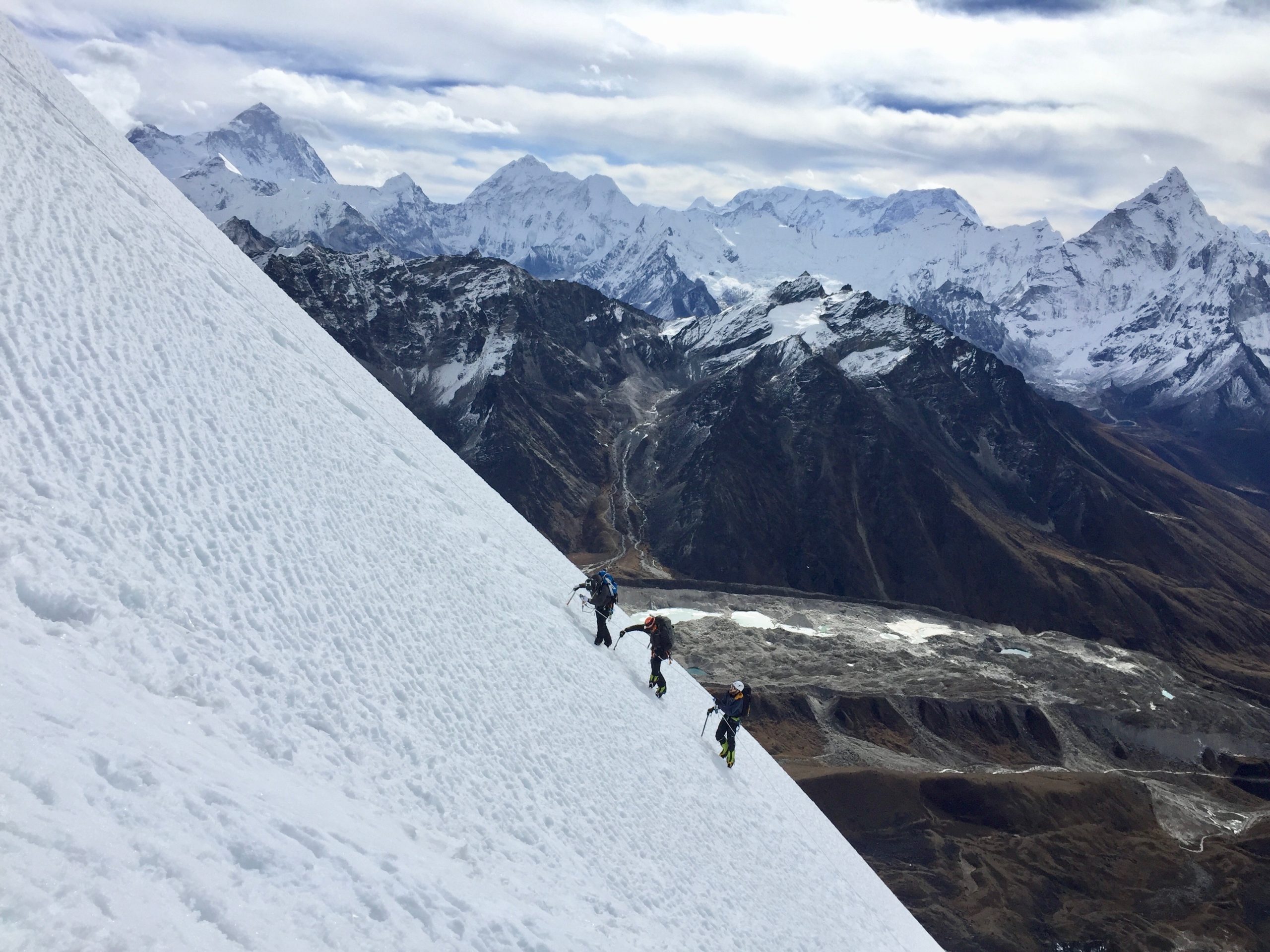
Ama Dablam
AMA DABLAM | Asia
Price Range:
$17,495 USD
Elevation:
6812m
Duration:
29 Days
Difficulty:
Intermediate/Advanced
Route:
Southwest Ridge Route
Share Expedition
Often called the most beautiful mountain in the world, Ama Dablam is iconic in its shape and prominent in the Khumbu Valley in Nepal. This stunning peak is an iconic goal for climbers interested in steeper technical climbing.
Climbing Ama Dablam is an incredible stand-alone goal or a great way to build skills and strength in your journey to 8000+ meter peaks.
Though well protected with fixed lines, reaching the summit requires a high level of fitness and strong technical skills, but all who make it are rewarded with incredible views down the Khumbu valley towards the world’s highest mountains.
The vista from the summit of Ama Dablam is one of the best summit views in the world!


Highlights:
- Climb one of the most iconic peaks in the world
- Test yourself at nearly 7,000 meters
- Take in incredible views through the Khumbu valley and experience its rich culture and history
- Spend a night at the most photographed and recognisable high camp in Nepal – Camp 2
- Test your technical skills on the near-vertical Yellow Tower and precipitous Mushroom Ridge en route to the summit
- Be part of an amazing community of intrepid climbers and explorers from all over the world who you will meet during your time on the trek, climb, and summit of Ama Dablam
Nothing found.
Ama Dablam Expedition Options
Our Ama Dablam expedition is one of our most popular Himalayan climbs. Iconic and technical, it is truly a climber’s climb with technical snow, rock, and ice climbing.
Choose from our stand-alone climb, Ama Dablam Team Climb, or plan a one-of-a-kind expedition with a private climb where you can dovetail it in with other climbs in the Himalayas, like Manaslu.
Nothing found.
Nothing found.
How early should I commit to my climb?
We feel that the sooner you commit the better as it gives you more time to prepare mentally and physically for the climb. Climbing Ama Dablam is a big undertaking and something that you will want to work up to consistently. I have found that people are generally more successful when they commit earlier as it gives them longer to shake out any problems that may arise, arrange their home and work life to be away for a number of months, and build their fitness endurance and strength up over time and thereby avoid injury etc.
What’s the best climb to prepare for Ama Dablam?
Lobuche is a great peak to summit as training for Ama Dablam. It provides an intro into technical climbing as well as dealing with altitude. Other great options include Denali, Island Peak, Mera Peak. Our 3 Peaks expedition makes for a perfect stepping stone to an Ama Dablam ascent.
If you’re from the Americas, or simply want and amazing climbing experience, the Ecuadorean Volcanoes is one of the best ways to get a lot of high altitude climbing in a short amount of time and is a crowd favorite. This program also makes for a perfect prerequisite to an Ama Dablam climb.
Will I need to purchase insurance?
Yes, trip insurance is required for this program and it needs to cover the entire cost of the trip and include trip cancellation, trip interruption, medical expenses, repatriation, and evacuation for the entire length of the expedition. Please forward a copy of your insurance for our records so that we can help you in the event that it needs to be used during the expedition. Most insurers require us to contact them immediately. For more information on trip insurance please visit the “Trip Insurance” page
What program upgrades are available?
If you would like a more personalized climb we can arrange for you to climb 1:1 with one of our lead Sherpa guides or a Western private guide.
The other main add-on for Ama Dablam programs is single rooming upgrades and/or deluxe rooms in the trekking lodges. Please discuss this add-on with us and we can help you decide if it is right for you.
It’s a long time away from home – can my family and friends join me?
Yes, your family and friends are more than welcome to join us on the trek into base camp and may be able to come up to camp 1 with us as well depending on their ability. Please let us know immediately if you have people who want to join us so that we can make arrangements for them. Space in hotels in Kathmandu and in the teahouses is limited during climbing season so we need to know final numbers asap!
What’s the acclimatization process?
Our entire expedition including the trip to base camp is slow in order to allow our bodies ample time to acclimate. In the Khumbu, we gaining altitude quickly and this slow process will allow us to acclimate properly and avoid altitude sickness. That means there is plenty of down time while your body adjusts. Please bring a few books or movies on your devices and be patient. This is a slow process but it will give you a much better chance at success on the climb and trek. Make sure to communicate with your guides directly if you are experiencing any altitude issues.
How much cash should I bring?
It is better to have more money than you need than not enough, while most things are covered on the trip once you land in Kathmandu (check what’s included/what’s not included list for details) you will still need cash. The cash that you need to bring includes money for visas ($50 for 1 single entry 30 day), Sherpa tip pool ($600+ for climbers and $300 for trekkers), money for staff tips (customary but optional) $200 for potential consultation and treatment by the doctors at base camp, $500 to cover expenses for a potential early departure (not often, but sometimes this occurs) and $1,500 – $5,000 if you think you’ll want a helicopter ride out, $300 for miscellaneous expenses like non-group meals, shopping, drinks around Kathmandu and while on the trip to base camp if you want wifi, sodas, specialty coffees, bottled water, charging of devices or snacks (meals are covered), Generally we recommend bringing $2,000 – $3,000 USD plus a credit card to cover all potential expenses including an early departure but it is unlikely that you will need all of this. Small denominations (1’s, 5’s, 10’s and 20’s) are better and although American dollars are accepted, you can change money into Nepali rupees at change houses when you arrive. Rates are generally about the same and I’ve never encountered one that isn’t legitimate. Also, there are now quite a few ATM’s around town where you can use your card to take out local cash at a good rate. It is much more difficult to change money, especially large sums, once in the Khumbu Valley. Please let your credit card company know you will be traveling so you can use your card (and not set off the fraud alert due to using the card in a foreign country).
How much gear can I bring?
We pay for yak + porter transport for two 50lb duffels (1x trekking duffel which will travel with you and 1x climbing duffel which will go straight to base camp) this should be more than enough weight. If you want to bring more than this with you, you will be expected to pay for the excess weight. This amount will include excess on the flight to Lukla and then be roughly $300/duffel each way to base camp beyond the two duffel allotments. Transport is getting more expensive every year so please leave the kitchen sink at home! (we already have those at base camp) Just bring what you need to be comfortable but not more than that. It is unlikely that you will need two full duffels for the Ama Dablam climb so please bring only one if you can fit everything into one.
What immunizations do I need?
Make sure your immunizations are up to date. Consult your doctor, local travel clinic, or the Centers for Disease Control (CDC) for updated information on immunizations for Nepal and China. Recommended immunizations include diphtheria-tetanus (DPT), polio, mumps-measles-rubella (MMR), meningitis, hepatitis A and B, cholera and typhoid, and rabies. Malaria shouldn’t be a problem in Kathmandu or on the climb. If you plan to travel to lower-elevation areas in Nepal before or after the climb, you should consider malaria chemoprophylaxis.
How should I pack?
For the trip to base camp climbers will need to pack in two separate duffels: a base camp duffel and a trekking duffel. Climber’s base camp duffel will not be accessible while on the trek to Ama Dablam and should contain all of your climbing gear (crampons, axes, down suit etc) and items you won’t need until the mountain. Your trekking duffel will contain everything you will need for the trip to base camp including your trekking gear, rain gear, street clothes, and a light sleeping bag. Trekkers will have everything with them in one duffel. Please keep everything you will need with you such as medications and medical supplies. What will go in your trekking and base camp duffels will be covered in more detail in Kathmandu. Pack an additional small lightweight duffel in your luggage to leave street, travel clothes and things you won’t need on the expedition at the hotel in Kathmandu.
What is the food like on the climb?
At Base Camp CTSS has the best chefs and food, hands down. Our teams are consistently blown away by the quality of food and hygiene at base camp considering where we are in the world. Our head chef trains at 5 star restaurants during the off season. Think lemon crepes, cheese omelets, chicken cordon bleu, pizza, fresh fruit almost daily, fresh salads, steaks, apple pie, fresh croissants and cinnamon rolls, and moist chocolate cake. We get shipments of fresh meat, fruit, vegetable, and other supplies weekly.
I have dietary requirements, can you cater for those?
Yes, our chefs are amazing and are well versed in catering for a wide variety of dietary requirements and allergies. On the trek we order a la carte so you can choose what you like and what you need to avoid. Please feel free to chat to us about your needs.
Why do I need to bring my own snacks?
We do provide a selection of snacks for the mountain and will have lots of good stuff but we want to make sure everyone has the food that they need. Even people who aren’t usually picky about food can get really particular about what they can digest on Ama Dablam due to the extreme altitude and getting lots of calories is hugely important. Gu packs, shot blocks, nuts, Snickers bars, cheese, etc… whatever it is that you know you can eat when you don’t want to eat anything is best. Getting speciality and familiar food can be difficult in Nepal so it’s best you bring what you love from home. Also, bring a good supply of cough drops or hard candy as you might like them in the dry air. We’ll have some for the team but people seem to go through them really quickly.
How safe is the food and water?
As in Kathmandu, once on the trail into base camp it is highly recommended that you stick to treated rather than tap water. Properly boiled water is available in all the teahouses and bottled water is readily available in stores en route but to reduce the amount of trash and pollution in the valley we encourage you buying boiled or UV treated water from teahouses. You can also bring your own water treatment solution. We will provide some teas and coffees at meal times but if you want sodas, bottled waters, specialty coffees, or drinks outside of meal times we ask that you purchase them yourself. Nepal isn’t known for its cuisine. The food on the trek to base camp can become a bit monotonous but its energy dense and fulfilling. Asian inspired, there is a lot of fried rice, rice based meals, nutritious dal baht, soups, omelettes etc. Stick to meals where the food is obviously local and sourced from the valley. We stay in reputable teahouses who have a good understanding of food hygiene so our climbers and trekkers rarely get sick. It’s ok and somewhat expected to get a slightly upset tummy as you’ll be eating food that is different to what you are used to. At Base Camp, we have our own chefs who are incredible and take every precaution, in a full catering kitchen. They also cook Western foods, have fresh food including fruit, vegetables and meat resupplied regularly and serve a good variety. CTSS is known to have the best food on the mountain and given where in the world we are, that’s a remarkable feat.
What’s the accommodation at Base Camp like?
We use North Face VE-25 tents. They’re large, spacious (the same size as a 3 man tent) and extremely high quality. Inside you will have a thick, comfortable 15cm sleeping mattress and a pillow. This is placed on top of a ground cloth to keep out the wet and cold.
Will I be sharing a tent?
There will be times on the mountain where you will need to share a tent with another climber to reduce the number of dangerous loads the Sherpa need to carry. It’s also a lot warmer and safer when you can keep an eye on each other.
What about phones & wifi?
We understand it’s important to stay in touch with friends and family and on top of your inbox. There are a number of ways to do this;
We suggest picking up a local Ncell sim card in Kathmandu with a data package. Signal is reliable in Kathmandu & for most of the trek up the Khumbu valley it is strong enough to support both calls and data. Once you get to base camp cell service becomes unreliable, although it can sometimes pick up a low signal (not enough to support data). You can buy a local Ncell sim card in Kathmandu and there is a Ncell store close to our hotel that we are happy to show you. Your phone will need to be unlocked and you will need your passport to get a sim card. You can get recharge cards almost anywhere. This is by far the most affordable way of staying connected and getting data in the Khumbu valley up until base camp. If you’d like to use your own sim card, talk to your provider about activating your international roaming and you should be able to tie into the local networks. At base camp, when the cell service runs out, you can connect to the wifi network and make calls on facetime, Whatsapp, FB, or Skype. It is available for individual purchase which means you only pay for what you use. Please note, this is operated by a third party and we have no control over whether it works or the expense. There are also internet cafes in the bigger towns along the route to base camp to get online and third-party wifi available for purchase in most of the teahouses. Please keep devices like laptops, smartphones and iPads waterproofed in your trekking packs so they don’t break in your duffels. You will be responsible for your own valuables. There will be a satellite phone with the team but we don’t expect to use it until above base camp. It can be made available to team members at $3/minute. If you plan on bringing your own satellite phone with you, you are required to register it with Nepal which costs thousands of dollars. Should you choose not to register it and use it anyway, you do so at your own risk.
How heavy will my pack be?
In general, climbing packs on Ama Dablam are relatively light once you get to the high camps. You will likely be carrying 15lbs – 30lbs (7kg – 12kg) most of the time while climbing and less on the trek into base camp. While climbing you should be prepared to carry your gear for the day and some of your personal gear for the mountain. Sherpa will carry all of the group gear and help with personal gear where possible.
How do I charge my devices?
Given the local expense of electricity, teahouses charge you to repower and recharge your electronic devices en route to base camp. This tends to get more expensive up the valley and a portable battery pack is a good idea. You will need to bring an adapter. This cost is your own expense. Portable solar chargers are a great option for something to leave at Base Camp and charge your devices when you are there. We will also have a solar charging setup available to you for charging devices.
I’d like my own room in hotels & teahouses…
All hotels and teahouses are double or triple occupancy but once we get to base camp you will have your own tent to spread out in. If you want single rooms en route to base camp, we can arrange this at an additional cost. Sometimes teahouses are full during the climbing season and may not have room to accommodate single rooms so please let us know as early as possible for the best chance of us securing a private room. Again this is adventure travel and we ask you to roll with the punches if they are not available.
Do I need a visa? How do I navigate Kathmandu airport arrivals?
Often just getting to Nepal can be the hardest part. Most nationalities can get a visa on arrival by filling out a simple online form just prior to their departure. It is each climber’s responsibility to research visa requirements for their passport, we recommend looking into visa requirements as soon as you sign up to avoid any issues.
Once you’re on the ground it’s time to relax. Upon exiting the plane, walk to the left of the customs area and have your passport, photo, money, and visa form handy. You must pay for your visa first at the desk straight ahead and to the left before getting in the “Visa Upon Entry” line (far left of the large room). Purchase the a 30 day visa for trekkers and Lobuche climbers single entry Nepali visa.
http://www.nepalimmigration.gov.np/page/visa-on-arrival
In the Khumbu, what’s not included?
We cover almost everything in the cost of the trip once we fly into the Khumbu valley so there shouldn’t be too many other expenses that you need to worry about. The biggest expense is tips. The Sherpa tip pool is $400 and we will collect that at the beginning of the climb to disperse amongst the entire team at the end of the climb including cook staff and dining staff. People sometimes tip their individual summit Sherpa a bit more. The other personal expenses people accrue are wifi (through third party operators) additional personal snacks, drinks purchased at tea houses, charging of devices & toilet paper. We suggest you bring a portable charger and pack a few additional rolls of toilet paper for the trek in.
What if we can’t get into Lukla in time because of weather?
It’s good to remember that we are in the Himalaya and weather can be variable so it’s important to be patient. Generally, it’s no more than a day or two delay. If it looks like we’ll be unable to get in on the plane then we’ll look at hiring helicopters to get into a safe spot in the valley to stay on schedule.
What’s the deal with blog updates?
We know family and friends will want to follow your progress so we will be posting regular updates to the Climbing the Seven Summits blog here: https://climbingthesevensummits.com/blog/ We try to update it as often as possible but make sure your loved ones know that ‘no news is good news’. If a few days pass between updates it doesn’t mean that anything is wrong, simply that we are probably busy climbing.
Didn't find an answer to your question? Don't hesitate to ask us.
At CTSS, we believe your expedition starts long before you reach the mountain.
That’s why we provide every climber with holistic, personalized pre-expedition support, no matter the objective.
When you join a CTSS expedition, you become part of the family. You’ll be paired with a dedicated Expedition Manager and backed by our full team of experts, with guidance on everything from personalized strategy and progression planning to gear selection, training, travel logistics, and insider tips to help you get the most out of your climbing journey.
We’re here to make sure you show up prepared, confident, and ready to thrive on the mountain and beyond.
6x Reasons to Choose CTSS
Safety
Your safety and success are our top priorities, in that order. We make conservative decisions, plan redundancies, and all our guides have wilderness medical training, safety and rescue plans, and access to doctors around the clock to help keep you safe.
Value for $
We keep our overheads low to pass savings on to you. We are proud to offer the best service at the most competitive price, without compromising on safety or taking shortcuts in logistics, staffing, or infrastructure.
Holistic Approach
Our service goes far beyond the mountain. Think of us as your climbing coach; we'll be there from start to finish to prepare, debrief, and plan your progression as a mountaineer, whether your goal is a single summit or the Seven Summits.
Guides & Team
Guides can make or break your climb. We hand-pick the most qualified, tenured, tested, and personable guides and Sherpas in the world. Owner and mountaineer Mike Hamill personally oversees the logistics and management of each expedition.
Our Values
We care about you, our people, and the planet. A portion of every expedition goes to the Tiger of the Snows Fund, supporting outdoor tourism workers and their families. We follow strict Leave No Trace principles and live by our No D*ckheads Policy, because who you climb with matters.
Success
We have an unparalleled summit success rate. How? We do it in a myriad of ways; like a great chef's secret sauce, we've fine-tuned the recipe over decades. Most importantly, we believe in you & your ability to achieve your goals, and we are invested in putting you on top.
Ready to Progress?
Consider these expeditions
I cannot even put into words how incredible that trip was for me – you truly run everything top notch and it shows in every single part of the trip. Your patience in teaching/coaching in a way that I didn’t feel intimidated by was amazing and so so appreciated. I am in awe of this whole experience
- Julie M, USA
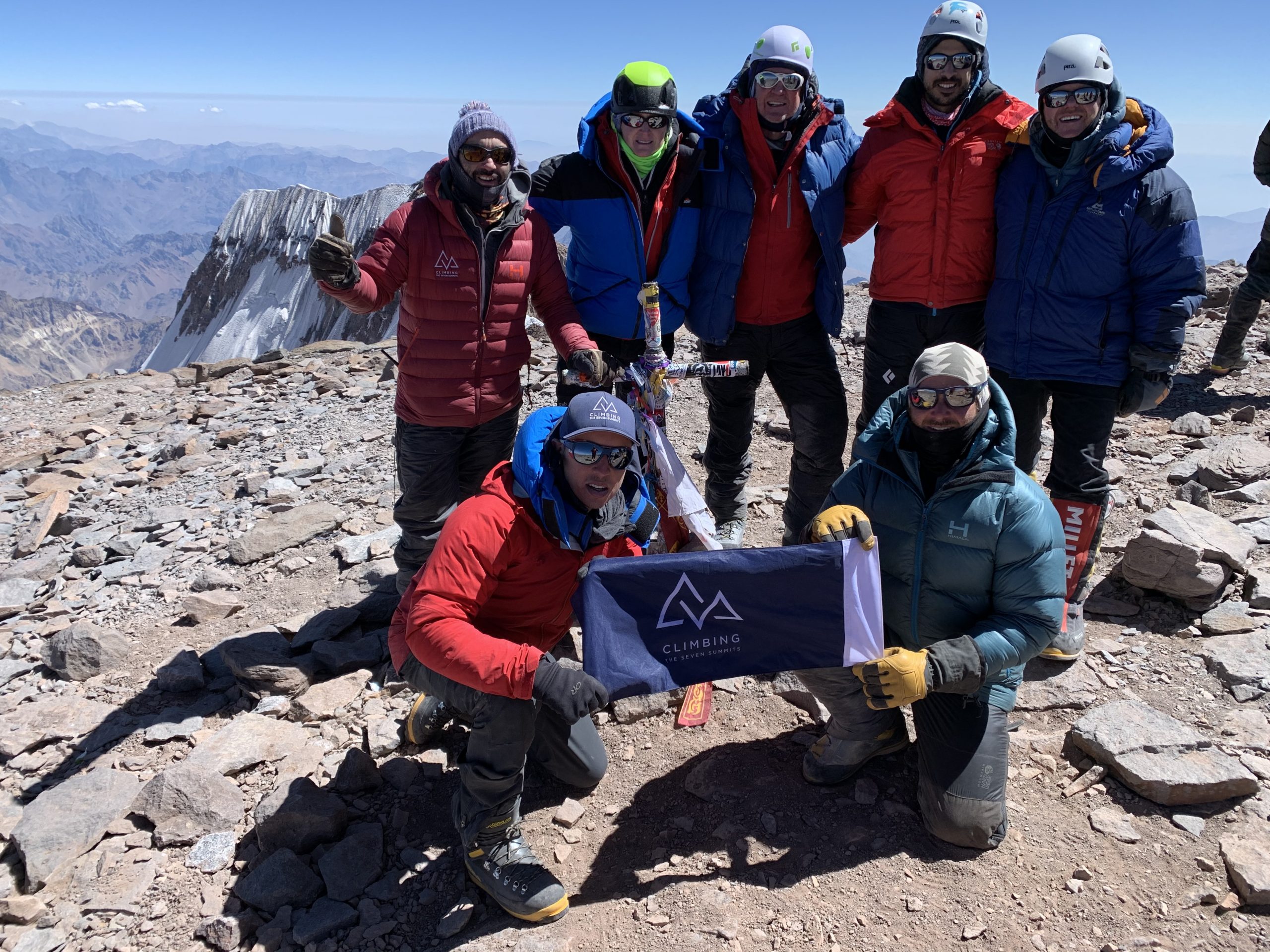
Testimonials
I cannot even put into words how incredible that trip was for me – you truly run everything top notch and it shows in every single part of the trip. Your patience in teaching/coaching in a way that I didn’t feel intimidated by was amazing and so so appreciated. I am in awe of this whole experienceJulie M, USA
As expected you run a first class show from start to finish… I look forward to the next adventure.Len F, USA
An incredible experience from start to finish. I can’t say enough what a difference it makes to have a great guide who cares so much about the whole experience and a great time to make the journey so special. I hope this is the first of many climbs with CTSS for me.Kevin A, USA
Ama Dablam Inquiry Form
Climbing Gear Advice
Book Now: 60-Minute CTSS Expert Gear Consult
Need a little extra support deciding what should and shouldn’t be in your climbing kit?
Schedule a virtual one-on-one with a CTSS gear expert to:
- Select gear that will work for all of your big mountain expeditions
- Help you better understand what you need and why for an upcoming expedition
- Review your trip-specific kit list to make certain your setup is dialed in
- Tap into our knowledge and experience to choose the gear that’s right for you
Price: $295.00 USD per hour
Click here to book your personalized session.

